
















Adiverse range of delegates from Australia and India attended the first Australia India Youth Dialogue (AIYD) in Melbourne and Sydney recently. AIYD 2013 was an initiative to foster and enhance partnership between the youth of India and Australia, providing them with an opportunity to engage and collaborate with each other. The event was held at Asialink in Melbourne, and brought speakers from both countries to discuss topics related to business, social and cultural development. The event was held from January 30 to February 1, and attracted an impressive list of participants including keynote addresses from Hon Alex Chernov AC QC, Governor of Victoria; Hon Martin Ferguson MP, Minister for Resources and Energy; Hon Chris Bowen Minister for Immigration and Citizenship; and Hon Barry O’Farrell MP, Premier of NSW.
A welcome video message from the Hon Julia Gillard Prime Minister was played at the gala opening night dinner held at the Richmond Football Club. She also met with AIYD alumni during her visit to India in October 2012. According to the PM, the relationship with India has moved forward by leaps and bounds. She said the visit to India had dramatically improved bilateral relations and had left a deep impression on her personally. “Last year I launched my government’s blueprint of our engagement with Asia which has put India at the forefront of our plans and goals,” she said. Ms Gillard said the conference had facilitated the visit of young leaders from India and helped them engage with the best and brightest young leaders of Australia in both Melbourne and Sydney, and that such interactions would make a contribution toward enhancement of these ties.
During the conference, delegates also heard from eminent speakers including His Excellency Governor Alex Chernov; ALP Senator for Tasmania Lisa Singh; Indian High Commissioner Biren Nanda; former Australian High Commissioner to India John McCarthy; and Associate Dean (International) Macquarie University Professor Naren Chitty. Planet Ark Founder John Dee, also 2010 NSW Australian of the Year; co-author of Target 3 Billion Srijan Pal Singh; award winning Scientia Professor Veena Sahajwalla; member of Indian Prime Minister’s Global Advisory Council Of Overseas Indians Neville Roach AO; 2011 Australian of the Year
Simon Mckeon; Director of AII Professor Amitabh Mattoo and Vice-Chancellor and President of Deakin University Prof Jane den Hollander also participated.
Discussions on the first morning centred on the rapidly expanding Australia-India relationship through an overview of political and administrative landscapes in both countries. This was followed by a discussion on the diaspora, cultural representation and soft power. The second day of conference focused on education in Australia and India, entrepreneurship and social innovation, and the challenge of sustainability. On the third day, the delegates moved on to the Lowy Institute in Sydney to hear about FDI in Australia and India and International Security, followed by a Q&A session. The opening and closing dinner events offered opportunities for delegates to socialize with each other and establish networks with local politicians, participants and the media.
The delegates from Australia included political reporter Latika Bourke; Jo Haylen, senior adviser to the Prime Minister of Australia; Jacob Tyler, professional rugby player and Rhodes Scholar; Gonul
Serbest, Executive Director, Trade in the Department of Business and Innovation; Gautam Raju, director and co-founder of OurSay, a democratic media website; and Niki Ariyasinghe, Head of Strategy & Planning at ING Direct. The Indian delegates included Amoghavarsha JS, wildlife photographer and filmmaker; Bhuvana Anand Director, Development & Communication at Centre for Civil Society in Delhi; DNV Kumara Guru, Director External Relations at Indian School Of Business; George Alexander, Vice President of Muthoot Finance; Hakim Habibulla, Olympian swimmer; Mayuri Mukherjee, journalist from the Pioneer; Neha Khanna, senior correspondent and news editor NDTV; Rohit Kumar General Consul of United Phosphorus Limited; and Vivek Kumar, Deputy Consul at the Consulate General of India in Sydney.
Since its inception in 2011, the AIYD Steering Committee has been instrumental in connecting promising youth from Australia and India, with previous forums in Mumbai and New Delhi enjoying equal success in building bridges between these youth. Said Monika

Barthwal, Datta member of the Steering Committee of the AIYD and lecturer in International Security at the University of NSW, “Youth can play a key role in helping to shift old attitudes and find new avenues for collaboration and partnership. India is a youthful country. Almost two-thirds of the population is under 30. In 201112, India was Australia’s largest source of permanent migrants. Greater engagement with India’s youth gives Australia an excellent opportunity to shape the attitudes of its emerging leaders and allow them to develop a deeper appreciation of Australia’s political, economic, strategic and social concerns.” (The Australian) Bachar Houli, Multicultural Ambassador for the AFL offered the AIYD delegates a short introduction to the game of AFL just before the opening night dinner. The gala event was held at the Maurice Rioli Room at the ME Bank Centre. In an attempt to strengthen its relationship with the Indian community, the Richmond Football Club is also supporting the recently incorporated Masala Football Club. It is a new team in the Victorian Amateur Football Association that aims to promote
Discussions on the first morning centred on the rapidly expanding AustraliaIndia relationship through an overview of political and administrative landscapes in both countries
footy within Melbourne’s migrant communities, specifically those from the subcontinent.
It was an exciting three days for the delegates who were exposed to ideas and issues from a wide range of fields and disciplines. Srijan Pal Singh, one of the speakers succinctly stated, “Across the globe there is a huge market for ideas, and this flow of information and opinions between young people is the best forum for such ideas.” The AIYD event received good reviews all round. Professional rugby player Jacob Taylor who is an active advocate for improving cultural intelligence, said that the AIYD conference enabled him to gain a better understanding of India and its people. Jacob, who has developed strong associations with China in the past, was keen to explore similar possibilities with India through bilateral dialogue and shared knowledge. According to Jacob, AIYD offered him that sustainable platform. In summing up, Mayuri Mukherjee commented in her farewell, “The conference may be over but in so many ways, the journey has just begun.”
Preeti Jabbal



STAge
Shreya goshal live
Saturday 23rd February, 7pm onwards at the Dallas Brooks Function and Convention Centre, Eades Street, East Melbourne. Come see Shreya Ghoshal live in concert. For details and sponsorship contact Lavisha Kapoor on 0433 876 943 or Varun on 0413 780 787.
Spirit of India
Tuesday, 12th march 2013 at 7.30 p.m. at Elisabeth Murdoch Hall, Melbourne Recital Centre. Nataraj Cultural Centre Inc. in association with major arts festivals and organizers presents Spirit of India – a Celebration of Indian Music & Dance. The concert will include Sudha Ragunathan, an eminent Carnatic singer, recipient of about 200 awards including the prestigious Padma Shri from the President of India; and Manjiri Kelkar, renowned for her melodious voice and fine sense of intonation. The double-bill will show the best of the two great traditions of Indian music. Visit www.melbournerecital.com.au
Tickets: adult $50; concession $40 Phone: 9699 3333

lehrein - theatre and dance
extravaganza
Saturday 16th march from 5pm to 7pm at the Chandler Community Centre, 28 Issac Road, Keysborough. Presented by Kalavishkar Innovative Art Academy. Tickets: $10, children under 5 are free. Call Manasi on 0419815323 or visit www.kalavishkar.com.au
Ka Kanji no Ka
Saturday, 16th march from 7pm onwards at The National Theatre, St Kilda. Gujarati and Bollywood comedy king Tiku Talsania live on stage with his successful and popular Gujarati play ‘Ka Kanji no Ka’, a new comedy play from Kanji Series. Tickets: $29, $39, $49 $59. Contact Kaushal Modi on 0424700226; Dipendrasinh Gohil (Bapu) 0433 976 697. Gujarati food available at venue.
fEstival
Holi Fair
Sunday 24th march, 11am to 5pm at Bundoora Park, 1069 Plenty Road, Bundoora, VIC. Organised by Fusion Entertainment. Ticket: $5 entry. For stalls and sponsorship, call Gaurav Verma on 0422 655 710.
hsv holi mela
saturday 30th march, 10am onwards at the Shiva Vishnu Temple, 52 Boundary Road, Carrum Downs VIC. Free event organised by Hindu Society of Victoria.
AIII Holi Fair
monday 1st April, 10am onwards at the Sandown Race Course, Springvale, VIC. Mika Singh live and lots of entertainment. Entry tickets available at venue. For sponsorship call Yogen on 0403 337 142.
SPIRITUAL
second surya yajna
Sunday 24th February, 5:30am onwards at Brighton Beach.

Vasudeva Kriya Yoga will host its second Surya Yajna with 108 Surya Namaskar at sunrise, facing the sun. Please bring yoga mat, towel, water and some snacks if required. The Surya Namaskara is expected to last for about 2 hours. Confirm participation by emailing Vasudevakriyayoga@gmail.com. www.vasudevakriyayoga.com
misc
actors wanted for the mahabharata of Women Come and be part of the multicultural cast of The
Mahabharata of Women (MOW) by Prof. K. Madavane, in a production linking the Indian epic to contemporary times! Three contemporary characters, Mother, Son and Sister interact with characters from the Indian epic Mahabharata, question their acts and sometimes identify with their angst. K. Madavane has directed over 50 plays in India and abroad. Casting Workshop: 9 to 18 February at Australia India Institute, (Seminar Room), 147-149, Barry St, Carlton. Cast will be finalized at the end of the workshop. During the workshop, the director will explain his method and philosophy of theatre. Interested participants/ actors may apply with a photo and a brief CV. Contact Cherian Jacob, at cherian_jacob@hotmail.com or K Madavane at madavane2006@gmail.com
FUNDRAISINg
Friends of the Children fundraiser dinner
Saturday 16th February, 7pm onwards, at Richmond Town Hall, Bridge Rd, Richmond Mel way 2h B-6. Dinner Dance to launch the ‘Walk for Children’ event and to pledge our commitment and support to the most innocent suffers in our community, children
who are victims of family violence and child abuse. Friends of the Children Foundation’s dinner and dance fundraising event will cost $75pp, includes $30 tax deductible. Donation recept issued. Includes beer/wine and a 3 course meal. Contact Jasbir Bedi on 0424 245 217 or visit www.friendsofthechildren.net
Walk for monash children
Sunday 24th February, registration from 8am. Walk is at Jells Park Wheelers Hill, entry from Ferntree Gully road and meet at Oaks Picnic area. You are invited to take part in the inaugural annual ‘Walk for Monash Children’ to raise funds for Monash Children’s Hospital. Visit www.friendsofthechildren.net
Clean Up Australia Day
Sunday 3rd march between9.30am and 1.30 pm at Brick Makers Park, Stamford Road Oakleigh. Mel Ref 69 H-6.

good Friday Walk
Friday 29th march, 8.30am for 9.00am start from Clayton Railway station. Annual 28km Good Friday walk to Etihad Stadium to raise funds for the Royal Children’s Hospital projects with Good Friday appeal.



1971: the technique involved the insertion of an electrode catheter into the heart via the femoral vein in the groin.
Today Prof. Vohra is a leader in genetic testing for inherited disorders of cardiac rhythm. He is the founder and current director of the Implantable Cardioverter Defibrillator (ICD) Clinic and was instrumental in the introduction of the first automatic ICD in Australia in 1984. Since 1961, he has authored over 120 medical publications and book chapters nationally and internationally.
 BY PReeTI JABBAL
BY PReeTI JABBAL
Associate Professor Jitendra Kantilal Vohra was in India celebrating
January 26, when his name was
officially declared amongst this year’s Australia Day awardees in the prestigious AM category.
The cardiologist and senior electrophysiologist at Royal Melbourne Hospital was honoured for significant service to medicine in the field of cardiology.
He was the first physician
Originally from Gujarat in India, Dr Vohra migrated to Australia in 1969 soon after the end of the ‘white Australia’ policy. He completed his MBBS and MD from Mumbai and had gone to the UK to complete his post graduation training. There he met the director of the Royal Melbourne Hospital who asked him to consider migrating to Australia.
According to him, moving to Melbourne was the ‘best decision of his life’.
“If you are sick, there is no better place than Australia as the medical standards here are comparable to America and Europe,” said Dr Vohra.
Commenting on the Indian community in Melbourne Dr
Vohra said, “When I migrated things were different; there were very few Indians here. However today the community has grown in significant proportions due to migration. Australia has become richer from all the diversity. Whilst there has never been any overt discrimination, the mainstream community today is far more accepting of migrants”.
Dr Vohra recently established the Cardiac Genetic Clinic in collaboration with the Royal Children’s Hospital and was involved in establishing the Cardiac Genetic Registry forming part of the National Genetic Heart Disease Registry. He also is a mentor and educator of trainee cardiologists, particularly in Australia and the Asia-Pacific region. He co-authored in 1989 a book titled Coronary Care Workbook, widely distributed today throughout cardiac units in Australian hospitals.
“Genetic heart diseases are my main area of interest,” claimed Dr Vohra as he explained his work in layman terms. “Genetic testing is a potentially life-saving screening for patients with cardiac conditions that may predispose them to sudden cardiac death and other genetic heart diseases. It is not commonly known that many young people die due to inherited
cardiac disorders. We screen families as a proactive measure to identify and help determine if they have any heart disease predisposition. At RMH we do a significant amount of testing in collaboration with the Murdoch Institute”.
Dr Vohra’s CV outlines the numerous publications, as well as organisations, research and medical health facilities that benefit from his expertise. In the little spare time he has, he likes to read, play tennis, dabble with photography and travel. He has strong ties with India, travelling back every year during Christmas to spend time with his family. According to him, people entering the medical profession nowadays are very bright, talented and hardworking, and rarely need advice. However when asked, Dr Vohra’s advice to young doctors would be to ensure that they have the ability to get along with people and other doctors, to work well within a team and have empathy for their patients. Receiving the Australia Day honour was a very rewarding experience for Dr Vohra. He is looking forward to the official ceremony later this year, when the awards will be handed to the recipients.
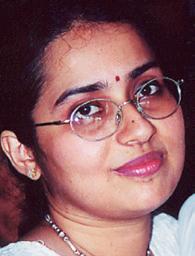
While bowels and bladders are often a no-go zone for many, Professor Ajay Rane, head of obstetrics and gynaecology at James Cook University’s School of Medicine, has dedicated his career to improving the pelvic health of women.

The gregarious UK-born, Indiaraised and British-trained Dr Rane moved to remote north Queensland

to found the department of urogynaecology at the Townsville Hospital.
The Pelvic Health Unit, a comprehensive, multidisciplinary, one-of-its-kind service in regional Australia which Dr Rane heads, is ‘at the forefront in research and treatment of debilitating bowel and bladder conditions, offering compassionate and minimally invasive therapies for their ailments’.
Since 1997, Dr Rane has brought dignity to the lives of numerous women. It is estimated that at least a quarter of women worldwide suffer silently because of the stigma associated with the issue.
Little wonder then that he is often affectionately referred to as the Saint of Townsville, and a woman’s best friend.
Dr Rane was conferred the Medal of Order of Australia (OAM) on Australia Day this year, for services in the field of medicine.
“For someone who has spent only fifteen years in this country, the recognition is a humbling one,” he confessed.
“It is more a recognition of women’s suffering. I have been very blessed for the opportunity to serve in a community that has never been serviced before. Whether it is the haves or the have not, there is always so much
of themselves to others in our community.”
Professor Ralph
researcher of Indian origin was named in the Australia Day 2013 Honours List recently. He was appointed an Officer in the Order of Australia for his research into Alzheimer’s disease and the development of early diagnosis and treatment programs. Professor Martins is the Foundation Chair in Ageing and Alzheimer’s disease and Director of the Centre of Excellence for Alzheimer’s disease research and care at Perth. He is an internationally recognised expert in the field of Alzheimer’s research, and has published more than 200 research articles in peer-reviewed publications. He was named Citizen of the Year for Western Australia in 2011 and Western Australian of the Year in 2010.

Speaking from Perth, Dr Martins said, “I am deeply honoured at receiving this prestigious award and humbled that I have been lucky enough to be selected, because I know that there are many outstanding Australians who have given so much more
more to give,” he said.
Over the past decade, Dr Rane has helped generations of women overcome physical and psychosocial issues associated with incontinence. He has recently copatented a mesh-based surgical kit (Perigee) to help sufferers.
“In the developing world, the burning issues we grapple with are birth and sexual trauma, fistulas and genital mutilation; while in the developed world we see prolapse, incontinence and now the scourge of females – genital cosmetic surgery,” he admitted.
After starting up the department of urogynaecology, he developed awareness-raising initiatives such as the ‘Beat the
Dr Martins believes that 2013 is going to be an exciting year for prevention trials. “My key future goals are to diagnose Alzheimer’s disease early, well before the symptoms are apparent and to develop and undertake effective prevention programs in collaboration with colleagues in Australia, India, Indonesia and the USA, with the aim to keep Alzheimer’s disease at bay”.
He also expressed gratitude to members of his team, the research foundation, the University and generous donors who enabled the research efforts to progress.
For more than 25 years, Dr Martins has been a dedicated researcher and world leader in Alzheimer’s research, and a part of medical teams who have made a number of internationally recognised discoveries which have contributed not only to the understanding of the disease, but also to its early detection. His other discoveries include genetic risk factors and lifestyle factors which contribute to the disease.
Through his leadership, commitment and tenacity, Dr Martins has built and continues to grow, a body of substantial and world-class research. He also continues to develop the clinical capacity of Western Australia with active links to his international
Bladder Blues’ program in a bid to educate thousands of women, particularly indigenous women in isolated communities.
Looking back at the challenges Dr Rane faced at the remote community hospital, he stated that the main hurdle was the metrocentric approach previously adopted.
“But in my opinion, all hurdles are a great opportunity to improve. Persistence, genuine passion, humility were the core building blocks of my team that totally changed the scenario. We soon learnt to leave behind our foreign egos and become one with the community,” he declared.
Despite extensive research and
peers who are at the forefront of the battle against Alzheimer’s disease.
Dr Martins has collaborated with specialist colleagues in India at various levels, sharing breakthrough research and projects. One of these is the startup of collaborative Alzheimer research centres in India in some of the major metro cities.
“India is on the verge of an Alzheimer’s explosion of 100 million people affected by the disease in the near future, and there is not enough government funding or awareness of the problem,” he said.
Born in 1957 in Bahrain to parents who hailed from Goa in India, Dr Martins studied his ‘Senior Cambridge’ secondary qualifications at a boarding school in Quetta, in the Baluchistan region of Pakistan. Interestingly, to facilitate his frequent visits home, he was given a Pakistani passport (although he was never considered a Pakistani citizen). In June 1974, aged only 16, Dr Martins came to Perth, and the rest of his family followed three months later. On arriving, they immediately felt completely at home. Dr Martins appreciates the choice, freedom and opportunities that Australia has given him. He was interested in science and medicine, but when he couldn’t get into medicine, he enrolled in biochemistry at the
teaching commitments within Australia, Dr Rane has also made it his mission to share his knowledge and expertise with developing nations where the sub-speciality is still in a relatively nascent phase. With this aim, he founded the UroGynaecology and Reconstructive Pelvic Surgical Society of India in 2005. Besides initiating a substantial research fellowship for overseas doctors to train in Australia, he has also established a fistula ward at the renowned Kasturba Gandhi (Gosha) Hospital in Chennai. Named after his wife Paula, whom he acknowledged as his pillar of strength, the ward lends support to distraught
microbiologist wife Georgia, who now also works with the foundation. They married when he was 20.
Dr Martins went on to do research on the action of insulin on diabetics, but it was Georgia’s father’s very different disease that ultimately determined his direction.
“My father-in-law had Alzheimer’s, so I changed to neuroscience and started work with Colin Masters,” he said.
He believes the most important trait for success is self-belief; when he started off with research into Alzheimer’s, many in Melbourne – then the ‘Mecca’ of medical research – tried to dissuade him, but he was determined to go ahead. The success Dr Martins has achieved is a testimony to his determination, self-belief and perseverance. A recognised leader of research in Alzheimer’s disease, he continues to work to develop an early diagnostic blood test and feels that if the current rate of research is sustained, an early diagnostic test is just five to six years away.
With lifestyle a surprisingly large factor in the onset of Alzheimer’s disease, Ralph suggests
women, both young and old.
Dr Rane has also facilitated close bilateral cooperation between India and Australia, with local doctors travelling to India to research and address the issue.
Equally passionate about female infanticide and foeticide, Dr Rane has championed the tragic cause. In 2010, he co-produced Riwayat, a Bollywood film exploring the issues around female foeticide and infanticide.
“The movie was the result of the combined passion of Sanjay Patole and myself. We read that 40 million girls have been killed since 1984, and believed we needed to do something via the mass media.
some basic warning signs GPs can pick up in their patients to get them onto a preventative course of action. Alzheimer’s risk factors include many of the usual suspects: lack of physical activity, obesity, high cholesterol, vascularassociated diseases (particularly type-2 diabetes), high blood pressure, and poor diet.
He says, “What’s good for the heart is good for the brain”. He recommends physical activity of around 30 minutes a day which includes a mix of cardio and weight training. His research has shown fish, turmeric and green tea to be deterrents against Alzheimer’s and is collaborating with an Indian herbal product manufacturer to create an “antiAlzheimer’s” pill which can incorporate all of these ingredients in a form that’s easy for the body to absorb.
Dr Martins is also actively involved in St. Vincent de Paul as president of the Bentley branch, and spends several hours a week volunteering and visiting the needy. “It is more instantly rewarding, the joy of people being happy, just seeing their response, rather than doing research, which is a long road,” he claimed.
Our aim was to highlight the issue without apportioning blame. We got 14 international awards and met Omar Sharif, Richard Gere and Juliet Binoche. Sadly, we flopped in India. I think our message went too close to home. Nobody in the government is interested in adopting the movie. But we just want to save one life. If we did that was an effort well worth it,” he concluded.
As well, Dr Rane has managed to shake off the inertia and reticence towards urogynaecological disorders.
“Fifteen years and a liberal dose of humour later, people and the press are pouring into our forums,” he quipped.

local news. All my students who have settled in different parts of the world, some of whom I don’t even remember, have found out about the award and are sending me good wishes,” said the 85-year-old Mrs Arora with her characteristic enthusiasm.
much if I did not have freedom of movement, but thanks to my family I am able to dedicate time and effort in working with the community,” she said.
and she became one of the first women of Indian origin to be awarded a Shilling Wall certificate by the Victorian Multicultural Commission.
hnot stopped ringing and her inbox is flooded with emails ever since people have found out that Melbourne Indian community’s favourite ‘Auntyji’ has received the Order of Australia Medal (OAM) recently. Krishna Arora has been inundated with
As a community stalwart, food enthusiast and former Principal of the Pusa Institute of Hotel Management, Mrs Arora’s popularity within the community knows no geographical barriers.
“One of my former students from Muradabad (India) rang me recently to tell me that my photograph had appeared in their
the Australia Day Achievement Medallions are awarded under the auspices of the Australia Day Council to promote good citizenship and achievement. They acknowledge employee contributions on special projects that have made a significant contribution to the nation, or outstanding performance of core duties in the year prior to which the award is presented.
Dr Kamal Puri, Senior Principal Research Scientist with the Bureau of Meteorology, won an Australia Day Achievement Medallion for his work in weather modelling.
The Bureau Executive on the basis of nominations submitted by senior managers determines medallion recipients within the Bureau of Meteorology.
Dr Kamal Puri is the Research Programme leader for Earth System Modelling Programme and has led the Bureau of Meteorology’s Numerical Weather Prediction (NWP) modelling and research since 1980. He was a key figure in establishing the Australian Community Climate and Earth System Simulator (ACCESS) that enabled the CSIRO and Bureau of Meteorology to have the best possible scientific tools for climate impact and adaptation analysis, and

Enthusiasm is only one of the words synonymous with Krishna Aunty; others that come to mind are tireless, energetic, helpful, caring…. the list goes on. With no intentions of hanging up her boots yet, her daily schedule at 85 is busier than ever. At any given time she is either off to a seniors meeting, joining the Australia Day parade, helping someone in need, dancing with Shiamak Davar’s students, cooking up a delicious meal or lobbying for a cause with local politicians. “I do whatever I can as I enjoy helping people,” said Ms Arora, giving credit to her family who encourage and support her in all her endeavours.
Krishna Aunty migrated to Australia in 1992 to live with her daughter, son-in-law and two grandchildren.
“I may not have been able to do
Born in Bangalore, Mrs Arora is the co-founder of the Indian Senior Citizen’s Association (ISCA) and currently on the Executive Committee of FIAV (Federation of Indian Associations of Victoria) as a representative of the Sangam community organization.
She was the Founder and Principal of the Pusa Institute of Hotel Management in Delhi before retiring and migrating to Australia. Mrs Arora has authored several cook-books and contributes a regular food column in a local publication based in Melbourne. She runs a hotline tele-service offering cooking tips to people. Mrs Arora has also won several awards and citations over the years. In 2010, she was honoured with the Shilling Wall tribute for her outstanding contribution to the community. Her name was engraved on the Queen Victoria’s Women Centre Wall,

“Receiving the Order of Australia medal is wonderful, but my real reward is the blessings, affection and respect that I have earned for helping people, especially newly arrived migrants,” claimed Mrs Arora. There are countless stories of how Mrs Arora has helped those in need, not necessarily documented or recorded, as that was not her intent.
“There are so many young families who need guidance and support from those who have lived here longer; there are people suffering from depression in their attempt to settle in a new country; there are elderly citizens who are not looked after well by their families. I try to help wherever I can in my personal capacity and recently through the FIAV, and I will continue to do so,” said the stalwart Mrs Arora.
Preeti Jabbalweather forecasting. According to the citation, the NWP and climate projection models now rank in the top three internationally, and the ACCESS system has generated the data that lies behind much of Australia’s contribution to the IPCC 5th Assessment Report. Dr Puri has also been a key advisor in a number of the Bureau’s major supercomputer acquisitions and in the organisation of R&D collaborations with supercomputer vendors.
Originally from Kenya, Dr Puri migrated to Australia in 1972 after completing his PhD from the University of Manchester in the UK. Prior to that he completed his BSc (Hons) and Diploma in Advanced studies from the same university. He came to work for CSIRO Australia as a modeller with the intention of returning after three years; however, he liked Australia and decided to migrate to Melbourne.
“In those days there were hardly
any Indians or East Africans here; however the ones that were here formed a closely knit circle. I still maintain my friendship with those I met in my early days in Australia,” said Dr Puri. “I find that the community has changed tremendously since then with the influx of migrants from diverse backgrounds,” he continued.
“Personally I think those were better days when we were so closely knit; now the community is too large and widespread for that to be possible”.
Dr Puri is highly respected internationally and has travelled extensively to UK, US and India as a visiting scientist. He is a member of key international panels on earth system modelling and has written over 50 publications.
Dr Puri’s links with India continue professionally. He is a member of the International Advisory Committee that was set up by the Indian Government’s
Ministry of Earth Sciences to advise the Ministry on issues relating to weather and climate in India. The Panel meets in India annually and is hosted by the MoES.
“Receiving this medallion in a special ceremony held on January 25 was very satisfying and gratifying for me. It is good to be recognised and respected by my colleagues as they are the ones who nominated me for this honour,” said Dr Puri.
“Australia is at par with the best in the world as far as weather prediction and climate change analysis; however we do suffer from lack of sufficient funding and are behind in the acquisition of supercomputers due tothe high cost,” he claimed.
Speaking about the future, Dr Puri said he finds his job very stimulating and intends to continue his focus on research and modelling.
Preeti Jabbal



the due process of law.
BY RAJNI ANAND LUTHRAHe is well known as a skilled raconteur - and this time again, Justice Michael Kirby, lawyer, judge and social commentator, did not disappoint. Addressing a packed audience, the accomplished orator’s trademark courage and intelligence shone through brilliantly as he tried to answer the question of what Gandhi would do today, and whether his ideals are still relevant. The occasion was the second Gandhi Oration to mark Martyrdom Day, the day the revered Indian leader was assassinated, and was organised by the Australia India Institute at UNSW.
Mohandas Gandhi and Michael Kirby, both lawyers and advocates of human rights, do have a few things in common. Just as Gandhi won the hearts of his people as he led them to independence from the British, so Michael Kirby has won the love and admiration of his own countrymen as he urges them to think compassionately on a range of salient social issues.

If one was the Father of the Nation, the other is a National Living Treasure.
Kirby spoke on Gandhi’s position on a list of issues that hold special significance in his own life: women’s rights, climate change, animal rights and human sexuality.
The Delhi rape case of December 2012 that brought the citizens of India out on the streets, was bound to feature in the address. Justice Kirby outlined a similar case that took place in Sydney in 1886, reminding the audience not to get “too selfrighteous about Delhi: violence against women is endemic in the world”. He went on to appreciate the manner in which the law has taken its course in the matter: the setting up of two official enquiries, and the holding back of the recommendation of the death penalty, because “hanging does not deter or prevent such offences. It is the risk of detection and speedy and proper determination of guilt that does so”. And that, Kirby concluded, is what Gandhi would say about the case: he would condemn the brutality of the act and the disrespect for women it showcased, and then insist upon

And yet, Kirby pointed out, for a man who espoused ahimsa (nonviolence), Gandhi did not hesitate to recommend violence in case of sexual attacks, writing, “God has given (woman) nails and teeth – she must use them with all her strength”.
Regarding climate change, Kirby recognized Gandhi’s doctrines of self-sufficiency and simplicity as tenets of an early environmentalism. (One famous Gandhi quote would have gone down well here: “The earth provides enough to satisfy every man’s need, but not every man’s greed”). And although Kirby dismissed as impractical Gandhi’s “extreme solutions” in terms of spinning his own cloth and grinding his own grain, the message of ecological restraint, Kirby claimed, came through loud and clear.
On animal welfare, another of Kirby’s recent passions, there was much common ground to be found. Kirby himself turned vegetarian a few years ago, and as patron of the animal welfare organisation Voiceless, he has been campaigning for better animal laws in Australia including legitimate farming and slaughtering methods. He recounted, to some amusement, Gandhi’s early attempts at eating meat (ostensibly to grow stronger and fight the British), and chastising himself for lying to his parents about it. And although Gandhi’s embrace of vegetarianism was for purposes of spiritual upliftment, Kirby’s support of it is to “protect the other sentient creatures that share the planet with us”.
Much has been written on the topic of Gandhi’s sexuality in recent years: his vow of celibacy, his abhorrence of birth control, his instruction of sex to young men and women in his ashram, and his “experiments” on sleeping arrangements involving young women – all of which Kirby found “other-worldly and disconnected with … reality”.
Yet it was his somewhat detailed description of the alleged homoeroticism in Gandhi’s life that the audience will remember most from the event. Of course, it was nothing new, taken as it was from the 2011 book Great Soul: Mahatma Gandhi and His Struggle With India by Joseph Lilyveld. In this controversial book banned in some parts of India, Lilyveld chronicles the relationship between Gandhi
and Hermann Kallenbach, a German Jewish body-builder and architect, revealed through letters. These letters, part of Kallenbach’s estate, are now held in the National Archives of India. Lilyveld inferred from the letters that the two had lived together “after Gandhi terminated marital relations with his wife”. The references to their “mutual love”, to portraits in the bedroom, to vaseline and cotton wool, and to “Upper House” and “Lower House” nomenclature led to such conclusions. A passionate gay rights campaigner himselfhaving come out in 1999 - Kirby took the opportunity to call for the Supreme Court’s repeal of Section 377 of the Indian Penal Code drafted by Thomas Macaulay in 1837, which outlaws homosexuality and stands valid to this day. The Delhi High Court - “a great, independent court” -
already invalidated that part of the Code in 2009.
Interestingly, Lilyveld’s work continues to be the only source that makes the claims on Gandhi’s homoeroticism. Other works of Gandhi’s sexuality such as psychoanalyst Sudhir Kakar’s Intimate Relations: Exploring Indian Sexuality and Mira and the Mahatma find no evidence of homosexuality or homoeroticism. Other analysts of the letters suggest that the loaded terms could not have been homoerotic for the time in which they were written. Kirby himself concluded, “A century on, who can tell what Gandhi meant?”
There is also the fact that no mention of homoeroticism is to be found in Gandhi’s own writings – which is replete with honest accounts of other ‘indiscretions’ and ‘misdemeanours’ such as indulging his passions with his
and that, kirby concluded, is what Gandhi would say about the case: he would condemn the brutality of the act and the disrespect for women it showcased, and then insist upon the due process of law.
wife while his father lay dying in the room next door, visiting prostitutes on at least five different occasions (but being saved by ‘God’ in the nick of time each time), and indulging in non-contact sexual activity such as bathing and nude massages and lying next to young women. “My life is my message,” he said famously. If he had the courage to write with such complete honesty, surely the homoerotic episodes would have found mention somewhere as well?
In the end though, it is Gandhi’s great grandson Tusshar Gandhi that has the last word: “What does it matter if the Mahatma was straight, gay or bisexual? He would still be the man that led India to freedom.” He helped change the world for not only 400 million Indians in the 1940s, but also many more citizens of the world, even as the century ticked over.
Neville Roach, Patron of the Australia India Institute and organiser of the event, spoke glowingly about Michael Kirby’s speech. “It was a powerful piece of work, extensively researched and quite a balanced perspective on Gandhiji’s positions on a variety of issues,” he said on Indian Link Radio “Gandhiji himself embraced self-critical evaluation, as we all should, and would have looked upon Michael’s speech with tolerance,” he concluded.

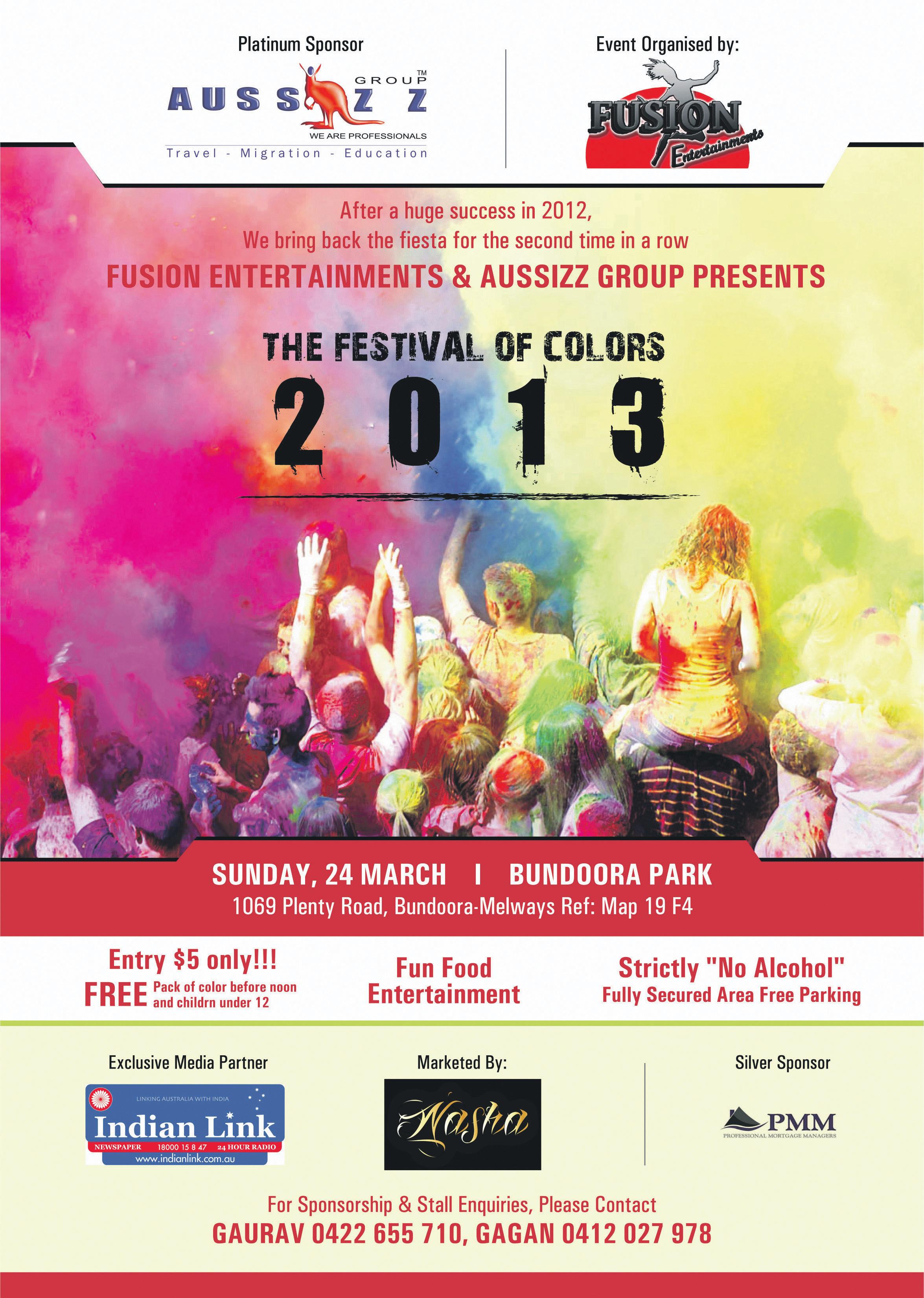
 BY PReeTI JABBAL
BY PReeTI JABBAL
This slogan printed on a plastic bag was to change the life of Indian business student Ash Dixit forever. Ash, who was struggling to find a job despite completing a Masters Degree in Business Management from RMIT University, was about to pack his bags and head back to India when a chance sighting of this recruitment ad by Victoria Police altered the course of his life.
“My housemate went to the Police Museum and returned with a bag that said Join Victoria Police Now. I read it and thought to myself, why not? I have always wanted to be a cop, so let me give them a call. That was the start of my policing career,” said Ash Dixit as he shared his story with Indian Link
He found out that unlike India, candidates over the age of 28 were allowed to join the police force in Victoria and he decided to apply.
“My application went through successfully and I was called in for selection much to my delight and my parents’ dismay. Being typical Indian parents they took a while to reconcile to the fact that I was about to give up a potential ‘business’ career and become a cop instead,” continued Ash.
“Many friends tried to dissuade me, however I was determined. There was one major hitch, though. I did not know how to swim and that was a pre-requisite for this role. I took 10 months to learn how to swim and it wasn’t easy. The physical was tough but I managed to pass the swimming test and was pleasantly surprised to see that I wasn’t the last one out of the pool, there were three others behind me,” he said with a laugh, reminiscing about his early days in 2003 when he became one of the first few Indians to join the Victorian Police Force.
Ash arrived in Melbourne from Nasik in India in 1999, as a business student. On completion of his course he applied for a permanent residency. His story resembles that of many migrants who go through the initial struggle to find a job and to assimilate in a new environment. Ash’s choice of vocation however, was quite unusual as he joined a police force that was predominantly Caucasian at that time.
“Initially people were quite
surprised to see a non-Caucasian like me when I went on my beat; however over time I noticed that they felt more comfortable in approaching me, especially those who belonged to multicultural backgrounds,” claimed Ash. “Many ethnic communities have different perceptions of the police based on their experience in their own countries. For example, in India people generally hesitate to report a crime as the policemen in India are considered to be unapproachable, corrupt or ineffective. They carry that perception/experience with them when they migrate and are reluctant to have anything to do with cops even if they are the victims. They are also unaware of their rights. My job is to change that mindset,” he explained.
Senior Constable Ash Dixit is currently the Community Liaison Officer for Maribyrnong Police Station. He works with people from a wide variety of personal backgrounds, interests, academic fields of study, hobbies, belief systems and personalities. In June

2010, Ash joined former Victorian Police Commissioner Simon Overland in addressing members of the Indian media about Victoria Police’s drive to attract a more diverse range of police recruits to reflect the multiculturalism of Victoria. The appeal was a way to create greater trust and understanding with the community. Continuing this tradition of fostering community relationships, Ash recently helped to establish the Maribyrnong African Youth Advancement Committee. This initiative is to guide young African people to procure jobs, traineeships or voluntary work, with a view to gaining employment. “As a migrant I can relate to these newcomers and understand the difficulties that they face in starting afresh in a new country,” said Ash. Ash expressed his concern over the increase in incidents involving people from Indian/migrant background in Melbourne, and said that there is a tendency to underreport victims of domestic violence within our community.
“I am keen to liaise with the Indian community to make them aware of their rights, to inform them about services that are available to them and to assure them that Victorian Police is very approachable,” he said. “I want the community to know that we are here to help”.
Ash’s advice to people from the community who are interested in a policing career, is to spend a couple of years in Australia before considering joining the force.
According to him it is important to be familiar with the language, culture and lifestyle of the community and have some local work experience before joining the police.
“I have really enjoyed my job as cop for nearly 10 years and would recommend policing as a career to anyone. In particular, I would encourage those from minority communities to join as it is critical that we, as a service, are reflective and representative of the entire community,” said Ash in conclusion.
Initially people were quite surprised to see a non-caucasian like me when I went on my beat; however over time I noticed that they felt more comfortable in approaching me, especially those who belonged to multicultural backgrounds
I would recommend policing as a career to anyone. In particular, I would encourage those from minority communities to join as it is critical that we, as a service, are reflective and representative of the entire community
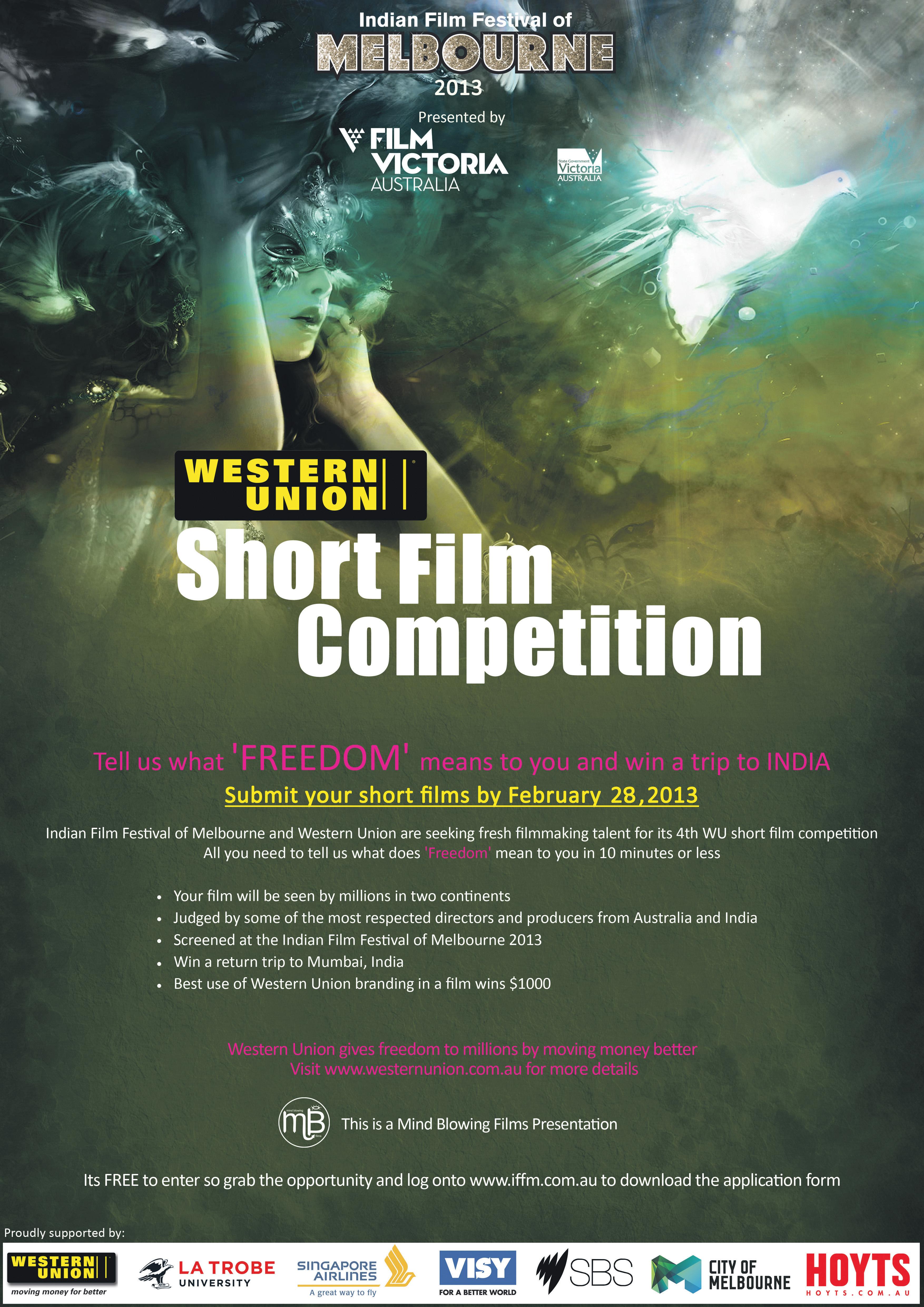
Tbetterment, an unexpected phone call spurred a flurry of activity for Melbourne’s Dr. Gurdip Aurora, President of the Australia India Society of Victoria. He was informed that the AISV had been nominated for the prestigious Pravasi Bharatiya Samman Award for community service.
The award is the highest honour conferred on overseas Indians as part of the annual Pravasi Bharatiya Divas (PBD) convention sponsored by the Overseas Indian Affairs Government of India
The phone call was to invite Dr. Aurora to Kochi in Kerala, where the 11th Pravasi Bhartiya Divas convention was to be held between 7-9 January, 2013.

According to the citation, ‘The Australia India Society of Victoria was recognised for its role in protecting the rights of Indian migrants and establishing a network of welfare activities’.
“It was a great honour to receive the award, on behalf of AISV, from the President of India,” Dr. Gurdip Aurora said as he shared his PBD experience with Indian Link upon his return.
“I did not have a lot of prior knowledge of this event and I certainly did not expect it to be as big as it turned out to be. I was overwhelmed by the hospitality and impressed by the way everything was arranged for me including travel, accommodation, meals, transport and use of a chauffeur driven vehicle in India,” claimed Dr. Aurora.
All the awardees were booked into Hotel Le Meridien in Kochi and the host spared no expense in making sure that their stay was comfortable, according to Dr. Aurora.
South Africa. The Indo-Canada Chamber of Commerce (ICCC) was the organising partner of the summit this year. The Government of Kerala was the State partner of this event and the enchanting city of Kochi with its natural beauty of backwaters and monuments of gods offered a warm welcome to the hundreds of delegates, media and dignitaries from various parts of the world.
Prime Minister Manmohan Singh formally inaugurated the three-day event on January 8 and released a stamp commemorating the Gadar Movement. In his address to the audience the Prime Minister said that safety and security of overseas Indian communities was uppermost in mind in the backdrop of turbulence in many parts of the world. Though the primary responsibility of safety and security of overseas Indian communities rests with the host nations, “when needed, as was the case last year in Libya, our government will provide prompt and necessary assistance”, the Prime Minister said.

knowledge society.
He said last year’s record remittance of $67 billion from overseas Indians was a testimony to both the emotional attachment and the fulfilment in investing in India’s strong economy.
“I also wish to see the Indian diaspora as a stronger partner, not only in India’s economic growth, but also in building India’s knowledge society, while continuing to engage culturally and emotionally, and serving as the effective ambassadors that they have been for this country,” the president said.
The Indian diaspora makes up over 20 million people. There are at least five heads of state or government, and over 70 senior political leaders such as deputy heads of state, speakers, ministers in various countries, who can trace their roots to India.
The Pravasi Bharatiya Samman awards President Pranab Mukherjee presented the Pravasi Bharatiya Samman awards at the valedictory session on January 9. Mauritius
Samman Award for public services.
The award was also given to: Prof Gurusharan Singh Chatwal, Germany (Science); Dr. Satendra K. Singh, New Zealand (Community service); Ismail E. Ebrahim, South Africa (Business); T.S. Ravindra Menon, Malaysia (Community service); Dr. Rasik V.Joshi, Mexico (Literature); Gilbert. C. Moutien, Reunion Island (Business); Mohammed R. Karuvanthodi, Saudi Arabia (Business); Bava Pandalingal, UAE (Community service); Dr. N.R.Kumar, US (Health care); Subhash Razdan, US, (Public service) and Ashok S. Vaswani, Guinea (community service).
The AISV from Victoria and the Indian Doctors Forum from Kuwait were the only two organisations to win the PBDS community service award this year.
Since its inception in 2003 only two Australians have been conferred with this award: well known ICT industry leader Neville Roach AO and scientist Veena Sahajwalla (of UNSW) who also appeared on the TV show The Inventors. Dr. Aurora felt delighted that AISV were to join this elite club.
“I do not know who nominated
after our 50th anniversary” said Dr. Aurora as he proudly displayed the gold medal and certificate to Indian Link in his Scoresby clinic recently.
The australia India society of victoria aIsv Prof. Alexander Boyce Gibson, the head of the Department of Indian Studies at the University of Melbourne, established the Australia India Society of Victoria in 1963. AISV was initially created with an objective to create interest in Indian history, arts and culture. All the past Presidents, and the present committee led by Dr. Gurdip Aurora, have helped in shaping the organisation over the years by playing an active role in issues affecting the Indian community. According to Dr. Aurora AISV has sought to improve and strengthen the quality of relations between Australia and India through their interactions with the Government, the media and the people who are directly affected by these issues.
The major achievements of AISV, as listed in their 50 years’
Overseas Indian Affairs Vayalar Ravi urged the delegates to air their issues openly at these sessions and exchange views and perspectives. Dr. Aurora who voluntarily attended these sessions said, “It was appalling to hear the stories of discrimination, lack of human rights and exploitation of people especially the plight of several illiterate migrants who ended up in prison due to an error in the paperwork filled in by
celebration souvenir, include:
• Establishment of the Victorian Indian Community Charitable Trust (VICCT) in 1986 for the provision of permanent housing and financial assistance for disadvantaged persons.
• Successfully lobbying the Victorian State Government in 1990 to exempt Sikhs from legislation introduced in Parliament to ban the carrying of knives. This legislation affected baptized Sikhs and prevented them from carrying a kirpan. Legislation stating compulsory wearing of helmets while riding a pushbike was also adopted to accommodate turbaned Sikhs.

• Successfully lobbying the Indian Government in 1991 (for three years) to establish consular services for Indians in Melbourne.
• Introducing in 1992 ‘Mehfil’
nights to showcase emerging and established artists in the field of music and arts. These continue to this day and provide the Indian community an opportunity to celebrate their culture and people.
• Applying pressure to both sides of Government over a three-year period for the introduction of a two-year waiting period for Spouse Visas in 1995. This resulted in a fairer Visa Process for overseas spouses from all countries and the AISV helped in establishing a fair immigration policy.
• Helping establish in 1999, in partnership with Australian Unity, a Travel Insurance fund for overseas visitors to enable them to gain access to hospitals and medical care. This served to take the burden off the State Government and in some cases the children of elderly parents who were
Psychiatrist Dr Manjula O’Connor, Vice-President
supporting their parent’s travel to Australia.
• Conducting a two-year research project in 2009 on the issue of the international students and putting forth 45 recommendations to the Federal and State Governments.
Ms. Priya Saratchandran wrote the Paper and the recommendations were accepted and changes made to the status of international students accordingly.
• Creating a taskforce in 2011 against domestic violence in Indian and ethnic communities to help the victims of such violence with the help of Dr. Manjula O’Connor. This was in response to the increasing instances of domestic violence within the community and the need to offer cultural specific assistance.

Dr aurora at PBD 2013
The theme of the 2013 Pravasi Bhartiya Divas was: Engaging Diaspora: The Indian Growth Story Many seminars, workshops and events linked to the theme were held including an exclusive session that gave a platform to people from Kerala in the Gulf to air their grievances. In his inaugural address, Union Minister for
He continued, “During my stay I briefly met Salman Khurshid, Cabinet Minister of the Ministry ; columnist and author Shashi Tharoor; Deputy Chief Minister of Punjab Sukhbir Singh Badal, and had a meeting with Minister of State for from Patiala. I also took the opportunity to remind the Prime Minister that his visit to Australia was long overdue” said Dr. Aurora.
Conventions like these provide a platform to the overseas Indian community to engage with the government for mutually beneficial activities. They are also useful in networking among the overseas Indian community residing in various parts of the world and enable them to share their experiences in various fields. The PBD’s main objective is to strengthen the diaspora’s engagement with India. “In that sense the PBD met its objective,” remarked Dr Aurora. “However I wish the general public had more access to the Prime Minister and President. They were both kept away from the public under very tight security and I couldn’t help comparing this with Australia and the fact that we have relatively easier access to people in power here”.
Psychiatrist Dr Manjula O’Connor, Vice President of AISV, and Chair of the Taskforce Against Domestic Violence in Indian and Ethnic Communities, commented on the future direction of AISV.
“In 2010-2012 we worked on domestic violence with women of the Indian community. This year we plan to work with Indian men. This is a prevention strategy.
Prevention of domestic violence is considered now as a more useful and fruitful area to target. The Taskforce will recruit men from the general Indian community. The project is an action research project, and will be conducted in partnership between AISV, the Melbourne University and the Australasian Centre for Human Rights and Health (ACHRH),” she said. “We have been fortunate in forming partnerships with a taxi company (who recruit young Indian men) and the Sikh Women’s Network from Western Victoria in this project. This project with Indian men will consist of using community-based interactive theatre to explore Indian men’s concept of DV; simultaneously raising awareness on the issue including legal and criminal implications. We have secured partial funding for this project from the Victoria Multicultural Commission and partly from ACHRH”.
When asked if achieving this award would make any difference to how AISV will conduct itself in future, Dr. Gurdip Aurora said, “We have worked hard for the last 50 years and we will continue to do so in future. There will be no change to our normal routine and we will keep working with the same dedication and keep contributing significantly to the community,” he said in conclusion.
The australia India society of victoria was recognised for its role in protecting the rights of Indian migrants and establishing a network of welfare activitiesDr Gurdip Aurora with the Pravasi Bharatiya medal AISV
















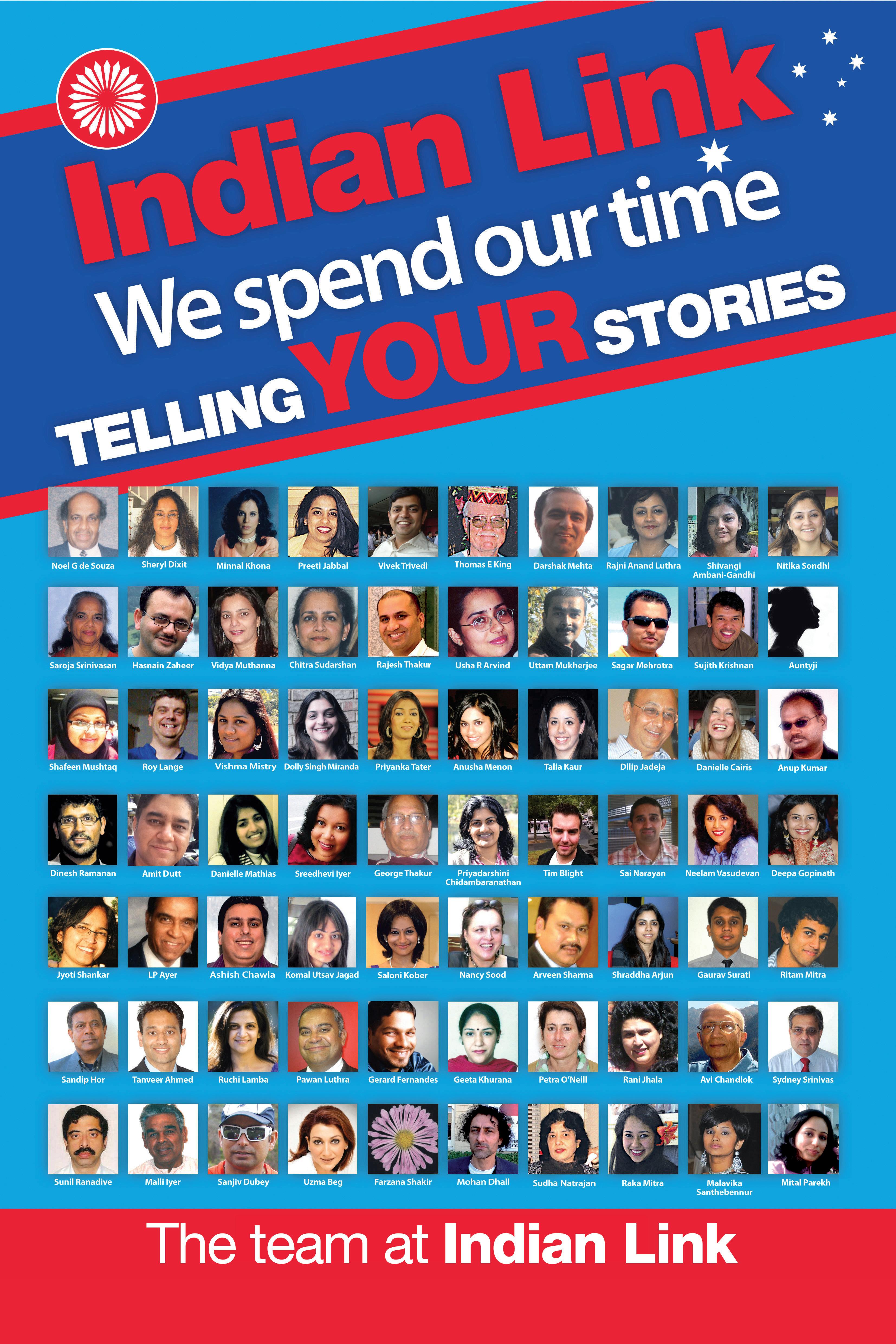


Kashmir’s first girl teenage rock band Pragaash, or First Light, from Indian-administered Kashmir has decided to quit after the region’s top Muslim cleric declared their music to be “un-Islamic”, according to their manager. Pragaash, a three-piece group whose members are still in high school, had been the target of an online hate campaign ever since winning a “Battle of the Bands” contest in Srinagar in December.
For the first time in its service, the Indian Air Force (IAF) will buy transport aircraft from private vendors to replace its ageing Avro fleet.
“We will release this month an RFP (request for proposal) to acquire 56 cargo aircraft from the private sector for replacing the indigenously-built Avros, which will be phased out,” Air Chief Marshal N.A.K. Browne said at an aerospace event.
Of the 56 aircraft, 16 will be procured offthe-shelf and the remaining 40 will be built in the country by a private consortium of overseas and domestic vendors.
Estimated to cost a total of about $3 billion (Rs.16,000 crore), the defence ministry’s acquisition council has recently allowed the air force to float a global tender to purchase a twin-engine cargo aircraft in six-eight tonne class, with a cruise speed of 800 km per hour and a range of 2500-2800 km.
The vintage Hawker Siddeley 748M Avros, built by the state-run defence behemoth Hindustan Aeronautics Ltd (HAL) during the 1960s, were inducted into the IAF transport fleet for ferrying its personnel as well as heavy equipment.
The Avros are also being used for rescue and relief missions.
“Acquisition from non-PSUs (public sector undertakings) will encourage the Indian private sector to design and develop a modern transport aircraft for military operations,” Browne said at the international seminar on “Aerospace ProductsChallenges in Design to Development”, being held ahead of the ninth edition of the biennial Aero India trade event.
The programme will also enable the vendors to service the aircraft besides encouraging small and medium enterprises to develop parts, sub-systems and accessories, as the first 16 aircraft will have 30 percent
indigenous component and 60-80 percent in the remaining 40 aircraft.
Airbus Military with its C295 and Alenia Aermacchi with its C-27J are likely to be in race for the multi-million dollar deal.
President Barack Obama has awarded Rangaswamy Srinivasan, an Indian-American co-inventor of LASIK eye surgery, with a national medal for science, technology and innovation along with 22 other researchers and inventors.
Srinivasan, 82, an inventor at IBM Thomas J. Watson Research Centre, received the 2011 National Medal of Technology and innovation with Samuel Blumand James Wynne.
They were awarded for “the pioneering discovery of excimer laser ablative photodecomposition of human and animal tissue, laying the foundation for PRK and LASIK, laser refractive surgical techniques that have revolutionized vision enhancement,” according to the White House citation.
Lauding the recipients for their hard work and contributions at a White House ceremony, Obama joked that they represented “the greatest collection of brainpower we’ve had under this roof in a long time.”
The medals represent the highest honours the US government can give to scientists, engineers, and inventors.
Speaking in the East Room of the White House, Obama flanked by Dr. Subra Suresh, Indian-American head of the National Science Foundation, thanked the recipients for “the sacrifices they’ve made, the chances they’ve taken, [and] the gallons of coffee they’ve consumed.”
The president also used the opportunity to make a pitch for increased focus on science and technology education, as well as
immigration reform.
“In a global economy, where the best jobs follow talent, whether in Calcutta or Cleveland, we need to do everything we can to encourage that same kind of passion” that has led to scientific breakthroughs and innovation, he said.
Punjabi, Urdu, Bengali and Gujarati are among the top 10 languages spoken in Britain, according to latest census figures.
BBC reported that the number of people in England and Wales who could not speak any English was 138,000.
According to the 2011 census, after English, the second most reported language was Polish, with 546,000 speakers, followed by Punjabi and Urdu.
Some four million people - or eight percent of the population - reported speaking a different language other than English or Welsh.
The top 10 reported languages were English, followed by Polish, Punjabi, Urdu, Bengali, Gujarati, Arabic, French, Chinese (excluding Mandarin and Cantonese) and Portuguese.
Not all languages were spoken, with 22,000 people using sign language, BBC reported. English or Welsh was the main language for 92 percent - or 50 million - of residents aged three and over.
Of those with a main language other than English, 1.7 million could speak English very well, while 138,000 could not speak English at all.
In London, 1.7 million residents used a main language other than English.
A US based Indian linguist claims to have discovered a new dialect spoken by the
minority Musilm community in some districts of Bihar that has no written record or name.
Mohammad Warsi, who teaches linguistics and Indian languages at the Washington University in St. Louis, said the main language for communication in Darbhanga, Madhubani, Samastipur, Begusarai and Muzaffarpur, is Maithili. But when Muslims speak among themselves, they speak a dialect that is different from Maithili, Hindi, and Urdu. This dialect does not have its own script or literature, he said.
This might be the reason that this dialect went unnoticed to linguists so far, said Warsi, who is a recipient of James E. McLeod Faculty Recognition Award for 2012.
While doing a comparative study, Warsi said he found that this new dialect is completely different from Hindi, Urdu, and Maithli and their verb conjugation and sentence structure, is quite different from each other.
For example “We are going” would be rendered “hum jaa rahain hain” in Hindi, “hum jaay rahal chhii” in Maithli and “hum jaa rahain hain” in Urdu sentence. But in the new dialect it would be: “ham jaa rahaliya hae”. Also, there is no agentive marker “-ne” in Mithilanchal Urdu.
Only one second person pronoun “tu” is used in the new dialect instead of “tu, tum and aap”.
From these examples, it is clear that the verb conjugation in the new dialect is completely different from that of Hindi, Urdu, and Maithli, Warsi said.
Warsi, a native of Darbhanga district in Bihar has given the nomenclature of ‘Mithilanchal Urdu’ to this dialect.
“Language does not have any boundaries, nor is it dependent on any boundary,” he said.
“Dialects are the contact languages of particular regions, and they have a deep impact on their cultural heritage,” he said. “Slowly with time these dialects begin to take shape of languages.”
The convergence of a dialect into a language is a symbol and pride of the people who speak it, Warsi said suggesting the inclusion of the new dialect in a recently initiated nationwide linguistic survey.

The teacher of the all-girl rock band against whom a ‘fatwa’ was issued said that the girls have stopped performing even as Chief Minister Omar Abdullah promised police investigations into the threats.
Adnan Muhammad Mattoo, who trained the three Class 10 girls before they formed the valley’s first girls’ rock band said “Since the grand mufti, whom we treat as part of the government, says they must not play music, the three girls have decided to quit.”
“I formed the valley’s first rock band, Blood Rock, seven years ago. I now feel seven years of my life have been wasted. I have also decided to quit and give up my pursuit of rock music,” Mattoo said.
He added that there are nearly 40 rock bands in the state. “Their future is also in doldrums now,” he said.
After receiving threats on the social media, the family sources of the three girls who formed the Pragaash band said they had told their wards not to continue their pursuit.
Bashir-ud-din Ahmed, head of the Muslim
clergy in Kashmir, issued a ‘fatwa’ (religious decree) asking the parents of the three girls to impart religious education to their daughters and labelled the girls’ performance as “a shameful act”.
Separatist leaders also disapproved of the girl’s band and said: “This (band) was against moral values and they (the girls) should refrain from singing. There is no place for such acts in Islam.”
Chief Minister Omar Abdullah had hoped on his micro-blogging Twitter site that the three talented girls would not give up under threats from “a handful of morons”.
Abdullah also said he would have the threats against the girls investigated.
Mehbooba Mufti, president of opposition People’s Democratic Party (PDP), said here Monday that Kashmiri women singers like Raj Begum, Kailash Mehra and Shamima Azad had been widely appreciated and encouraged. “I don’t know what religious reasons the grand mufti had to issue his decree, but I feel it is being blown out of proportion,” she said.
PDP spokesperson Naeem Akhtar told media persons: “Music is part of our spiritual culture since decades. Kashmir has produced many women singers and Kashmiris are still fond of their songs.”
Ruling National Conference leader Mustafa Kamal said: “The chief minister has said he would provide security to these girls if they want to pursue their passion. He has also said he would not intervene if the girls decided to give up their pursuit of music.”
Taking strong exception to the ‘fatwa’, state BJP chief spokesperson Jitendra Singh said: “These (fundamentalists) who are uncomfortable with the return of normalcy in Jammu and Kashmir want to keep the Kashmir pot boiling for their vested interests.”
He added: “These are elements which do not want the youth of Kashmir to be a part of the national mainstream in democratic India.”
The band Pragaash (morning light) comprising three Class 10 girls, gave their first live performance at Srinagar’s music festival, Battle of the Bands, Dec last year. States
States will invite bids for procuring electricity to bridge the gap in demand and supply in the next six months, the government said.
It is part of a package of measures power ministers of states and union territories resolved to adopt to improve the country’s power situation after a meeting with union Power Minister Jyotiraditya Scindia.
A power ministry statement said the states will now invite bids for procurement of power to meet the uncovered gap in demand and supply within the next six months through Case I bidding.
Case I is an open bid where the developer has to decide for fuel and location and compete against any other developer.
“State governments would prepare plans covering generation and transmission infrastructure for all time horizons and would procure about 90 percent power of their requirement under long-term or medium-term agreements,” the statement said.
Briefing media persons on the progress of the financial restructuring programme (FRP) for distribution companies (discoms), Scindia
said 5 out of seven “focus” states had agreed to take part in the scheme.
“Five states are already on board (the FRP). Their total short-term liability is close to Rs.120,000 crore. We are speaking to the finance ministry for the approvals so that in the near future, next week, we’ll be able to take it forward,” Scindia said.
Tamil Nadu, Andhra Pradesh, Rajasthan, Haryana and Uttar Pradesh are the states which have commited to the FRP.

In September last year, the Cabinet approved the restructuring package for discoms’ debt burden, which stood at a staggering Rs. 246,000 crore at end of March 2012.
Under the scheme, 50 percent of the short-term outstanding liabilities would be taken over by state governments. The balance 50 percent loans would be restructured by providing moratorium on principal and best possible terms for repayments.
The 6th conference of power ministers of states and UTs deliberated several issues regarding providing affordable and adequate power to consumers and making electricity accessible to all, particularly in those areas that are not connected with the grid.
It was also decided that the state governments would ensure the accounts of the utilities, up to 2011-12, are audited and finalised by March 2013, and in future the accounts of a financial year are audited by September of the following financial year as per the Companies Act.
States would ensure that discoms file multi-year tariff petition and that State Electricity Regulatory Commissions (SERCs) announce multi-year tariff as per the National Tariff Policy.
IT major Wipro Ltd’s global hydraulics business unveiled its aerospace facility in the special economic zone (SEZ) at Devanahalli near the airport on the city’s outskirts. Set up with an upfront investment of Rs.650 million in a 7.2 acre campus, the country’s first of its kind plant has an installed capacity to manufacture about 2,000 actuators annually for various aerospace applications.
An actuator is a device used to control
hydraulic fluid or pneumatic pressure in a mechanical or electronic system and convert this energy into motion.
“Our actuators will have various applications in aircraft, including landing gear, flight control systems, engines and utilities,” Wipro Infrastructure Engineering president Pratik Kumar said on the occasion.
The global actuator systems market is estimated to be around $3 billion.
“Our vision is to build a significant presence in the aerospace and defense market, leveraging on our experience and competence in precision engineering and machining space,” Kumar said.
The company’s engineering division tied up in May 2011 with Spanish firm Compania Espanola de Sistemas Aeronauticos SA, a subsidiary of the European Aerospace and Defence Corporation, EADS, to manufacture precision engineering components.
“The pact involves technology transfer as well as manufacturing aerospace actuators and related precision engineering components by Wipro for CESA,” Kumar said.
The company plans to double the investment over the next six years to expand capacity to about 8,000 actuators per annum and add new product lines in precision manufactured components.
“We have big plans for this business and are in talks with several players to develop multiple product lines as the facility, with end-to-end capabilities from product development, manufacturing to testing, is well positioned to partner global OEMs/tierIs, which are looking to extend their supply chains to cost-competitive countries like India and to meet their offset obligations,” said engineering business head Sunil Rajagopalan.
The facility will commence its serial production in April.
Wipro chairman Azim Premji, EADS/ Airbus vice-president Klaus Richter and Karnataka’s principal secretary (industry) M.N. Vidyashankar were present on the occasion.
Ramayana, the great Indian epic, is now
available in Polish language, courtesy Janusz Krzyzowski, an Indologist in Poland who has translated the monumental work.
Though few episodes of Ramayana were translated into Polish in 1816, these were mere translation of western writers. In the 20th century, some attempts were made to translate a few more chapters.
It seems Krzyzowski collected the material from dozens of books and presented in a coherent manner so that a reader could sustain his interest while going through different chapters. The original was penned by Maharishi Valmiki in Sanskrit.
“My main purpose was to translate this epic into many chapters in a story format so that laymen and particularly Polish children could enjoy the book as well as they should be aware of the great Indian mythological tradition.
“Ramayana and Mahabharata are two great epics which cannot (be) compared with other epics. Even Greek epics come out as pale shadows when we see the canvas of the Indian epics. They are almost unique in the history of mankind,” Krzyzowski told reporters.
The book’s effect was visible when a group presented a two-hour show on the pattern of Ramlila. In May, the group will visit few cities in Poland to enact Ramlila for Polish schoolchildren with the help of the Embassy of India in Warsaw.
“He has done great justice to promote India in his nation. He deserves all our praise and we feel proud that such a gem is with us in Poland,” said the Indian ambassador Monika Mohta.
Krzyzowski has been a prolific writer on India since 15 years. His love for India has roots since his university days when he enrolled for a master degree in philosophy after a medical degree. This interest turned him into an automatic Indophile.
His books on Ashoka and Tansen were well-received along with books of Urdu masters like Mir Taqi Mir, Mirza Ghalib, Firaq Gorakhpuri, Faiz Ahmad Faiz that he translated with Surender Zahid, an Urdu poet in Warsaw.
Krzyzowski is the president of IndiaPoland Cultural Committee since its inception in 2004. IANS


India launched its first Biennale for Contemporary Art in Kochi on 12/12/12 and according to art critics worldwide, it has been a huge success.
BY DANIEL CONNELLThe Kochi Biennale story is one of integrity, hard work, sacrifice, leadership, determination and guts by the Biennale Foundation and a handful of political leaders who maintained a belief that India can again foster big picture inspiration and that it deserves nourishment of the newest ideas.
In 2010, the then Cultural Minister for Kerala Mr M A Baby and well-known Kerala artists Bose Krishnamachari and Ryas Komu initiated the Indian Biennale idea and succeeded enormously in pulling it off. It was affirmed in the office of the Prime Minister, and the Kochi Muziris Biennale Foundation was formed with the date set at December 12, 2012 (12/12/12).



But for the visionary leadership of these few, India’s first real contemporary art event almost would not have happened. It was plagued by baseless allegations of corruption and beset by government enquiries. When public funding was withdrawn after a change of state government, the Biennale Foundation forged on and attracted private sponsorship.


To their credit they produced a magnificent show, which the world of art is talking about. Australia too can be proud of backing a winner as out of 6 international project supporters, 3 are Australian: the Australia Council, Department of Foreign Affairs, and Trade and Asia Link.
Of the 80 artists, 6 were Australian and an additional 10 Australians were involved in satellite shows, as well as Melbourne University and the University of South Australia.
Kochi is not just interesting, but also the right choice for India’s first Biennale and Keralites should be proud. This coastal city was a thriving cosmopolitan centre for hundreds of years before Europe even knew that the East existed! Kochi has the first mosque in India, the first church and
the first synagogue. It has held communities of Arabs, Chinese and Europeans alongside the dynamic Dravidians, and is the only place in India where three different European nations ruled consecutively and continuously for over 400 years. Kochi had the second elected communist government in the world and is still the most literate state in India.
It seems that Kochi is the natural home for new ideas. The island of Fort Kochi where the Biennale is centred, offers a contained yet spacious environment to exhibit and create work, accommodate visitors and artists, all within walking distance of venues. It has a multitude of abandoned spice warehouses, lanes, walls and forgotten gardens, pungent with memory and character. The Biennale foundation has turned many into world-class art spaces. The huge Aspin Wall House, an abandoned space and coconut fibre trade house on the sea wall, is the main venue. Works are displayed in small and vast rooms, previously kitchens and offices. In pours an abundance of tropical light, and outside are immense cargo ships and wooden fishing boats so close you can touch them. It is potentially the most picturesque biennale venue in the world.
The venues, location, history combined with the sheer determination to make the event work with the raw energy of international and local artists working side by side in heat and humidity with tradesmen and labourers, all came together to create a fierce authenticity that makes the KMB a very Indian and a very new and important art experience for the world.
Some of the accusations hurled at the organisers were of elitism and exclusivism, yet I witnessed both Artistic Directors Bose and Ryas, as well as high profile members of the organising committee, attend community event after community event when no one else was looking. On one day they were welcoming the world’s most important artists to India: Ai Wei Wei, the director of Tate Modern, John Abraham or Miss India; and the next day they were

at the Cochin Carnival community event with 25 local women in a small temple. No entourage, no pretence; the office is open, bustling and focussed everyday.
An avid audience
Most importantly however, I witnessed the rare delight of ordinary people engaging with contemporary art for the first time, and loving it. The difficult videos of Pakistani artist Rashid Rana who uses tiny moving cut squares from pornographic videos, which are inoffensive, yet somehow seductive; then there is a collage that depicts victims of a suicide bombing. In a terrible moment of recognition we are forced to link
seduction and violence, forced to acknowledge a horrific familiarity. There was a policeman who spoke little English, but knew every sensitive video piece by Australian artist Angelica Mesti by heart, who showed me around Moidu’s house. I saw crowds of families reading the heart-breaking books of Amar Kanwar’s records of farmer suicides, page by page and watching open-mouthed the hidden protests against forced land accusation by villagers in Chhattisgarh. I saw auto drivers parking their 3-wheelers and coming in to see sculptures by Subodh Gupta, videos by Chinese artists and installations by South African artists. I spoke to lawyers,
businessmen, students, children, housewives and unemployed labourers in exhibition halls who had favourite pieces. I saw a mum and her two teenage daughters in full Islamic dress laughing like children as they discovered a sculpture in Cabral Yard. I saw the slow drip feed of ideas seeping into the local psyche: a worker returned from Dubai who was motivated to enter one of his photos in a national competition and won; an engineer picking up his pen to write creatively after spending days in the free library of art and design in David Hall; a chai shop owner talking to the media about the value of art after his portrait drawn on a wall became
the centre of a controversy. There’s talk of a side exhibition of those inspired by the Biennale at its next event.
Art liberated!
Room after room of sensitive, intelligent, gutsy, humble artworks, and I could not progress without stopping to call a friend to share the delight. After years of seeing exhibitions of paintings in Delhi and Mumbai by artists desperate to sell their work to survive, here comes this confident explosion of audacious tenacity. Art liberated! I was deeply moved by the focussed humanity that had gone into this exhibition. This event represented every potential
Over the last decade much has been spoken of the ‘boom’ in Indian art, sparked by an increase in purchasing power of the middle classes coupled with an international curiosity on how Indian artists reflected the rapid changes India was experiencing.
This boom however, was short lived. Many galleries were exploiting a new market and it could also be argued that an unsupported art infrastructure in India – museums, critics, publications, tertiary courses and events – meant that there was not sufficient depth to sustain it.
Supporters of the arts know that creative societies are prosperous ones and that a sustainable arts sector cannot happen without public and private funding for experimental art and an art-educated public. For this to happen, large public events for the visual arts are required. Over 150 cities worldwide now host Biennales. A Biennale for contemporary art is an event for which India has been crying out.
The idea of an international Indian visual art event is not new to

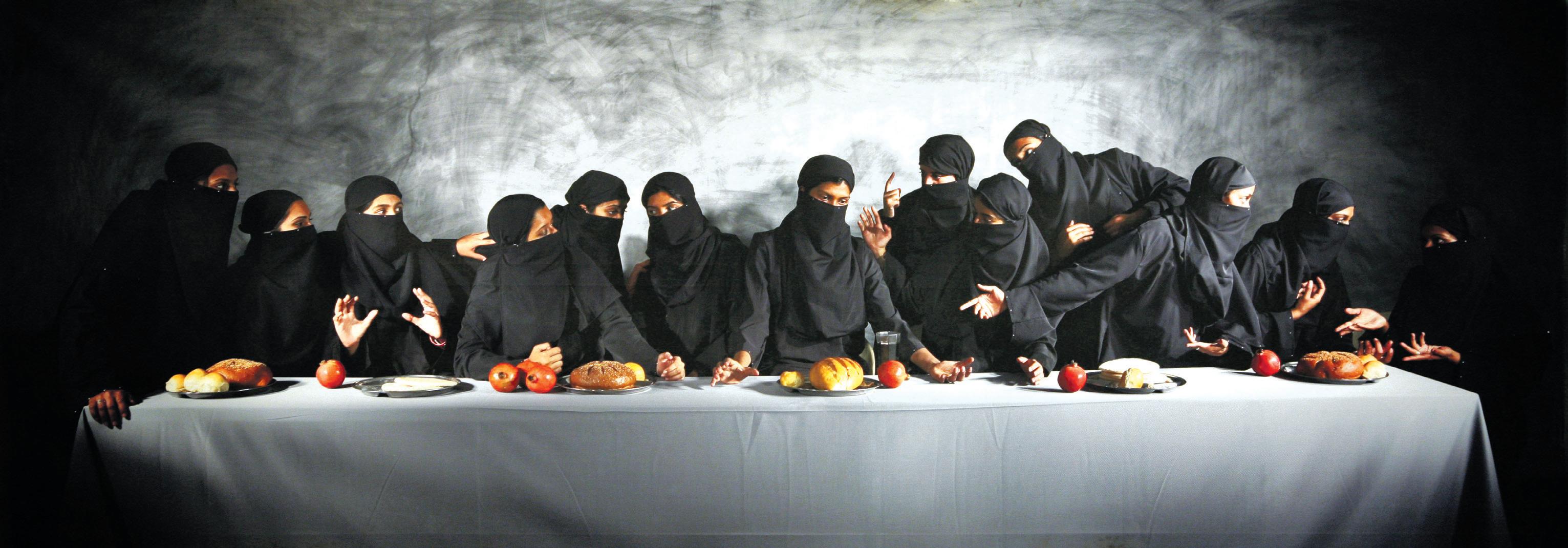
the country. The Triennale of contemporary art spearheaded by writer Mulk Raj Anand began in 1968 under the Lalit Kala Akademi. This sadly folded and India was left in the dark.
The recent boom/bust renewed interest in the visual arts and soon the India Art Fair in Delhi originated. However, like art fairs across the world, it is an art supermarket where the price tag is often more important than the ideas within the work. Money always turns heads, but ideas are more difficult to sell; hence a Biennale, where nothing is bought nor sold but instead simply invites people to engage with ideas, was harder to get off the ground.
Visual art has the reputation of being the most avant garde of all of the art genres; a little different from performing arts and literature. It is non-conformist, but provides a richer space for ideas and is often controversial.
The lack of public or private funding for radical experimentation or conceptual art in India has forced most practicing artists either out of India or into commercial applications, such as paintings for home decoration. It has also meant that local artists have to see


goodness I knew existed in the new Indian psyche.
Art is about ideas, not products. Art is a container for ideas, if you like. Ideas are the raw material for creativity. Creativity expands personal freedom and accelerates human progress, not necessarily in industry but also in relationships, understanding, inventions, design, sensitivity, health and the underlying reasons for why we do what we do. Art is an essential ingredient of a dynamic and healthy society. Art gives us not only the tools, but also the permission to think.
So if you like ideas and you love India, get to Kochi before March 13, and see India shining.


new international works on screens and rarely have a chance to view them for real.

The eternal problem for artists worldwide is the tyranny of commercial galleries, that is, making what people want to buy. One antidote to this is what has become known as a ‘Biennale’, invented in Venice in1895. This is a curated exhibition happening every two years and is usually attached to a city. Biennales are expected to be the apex of avant garde, where the most complex ideas in art give a censorship-free snapshot of the current social, philosophical and political landscape from that city’s perspective. Indian artists have been well represented in international Biennales for decades, and their highly sophisticated ideas about India have been consumed by foreign audiences.
Indian audiences and Indian artists came together in a serious space to discuss reviving an interest in contemporary art, and thus was born the concept of the Kochi Muziris Biennale Foundation. Daniel Connell, an Australian visual artist who has lived and worked as an artist in India for over 5 years, spent a month at the Biennale creating new work.
 BY NOEL g DE SOUZA
BY NOEL g DE SOUZA
Mahatma Gandhi, the Father of the Indian nation, was a complex person, like many other great people. However the thing which stands out was that he was a peaceful man, even to the point of naiveté. There has been no other such person in India’s history since its independence.
There are those who consider Mohandas Karamchand Gandhi (‘mahatma’ is a title meaning ‘great soul’) to be a naïve and impractical person. For example, Gandhiji (a respectful address) believed that passive resistance by Jews against the Nazis could help them to ultimately win their rights. History has clearly proven otherwise.
President Barack Obama openly professes his admiration for Gandhi. He told students at the Wakefield High School in Arlington in 2009 that Gandhi represents the power of change through ethics, and how to use morality to foster change. Obama pointed out to the students that Gandhi made people realise that they had power within themselves and that that power needed to be used to help others, and not to oppress them.
Gandhian methods helped India gain its freedom from the British and the French which were democratic countries, but failed when it came to the Portuguese under the dictatorial rule of Salazar. Peaceful demonstrators (sathyagris) marching into Goa in 1955 were met by gunfire and mowed down. Several were killed.
During his famous speech, ‘We have a dream’ on Capitol Hill, Martin Luther King and his supporters around him wore white Gandhi caps
Gandhiji hailed from the state of Gujarat. When he moved from Britain to South Africa, he was smartly dressed and sat in a carriage reserved for whites. But though he was fair-skinned, he was thrown out of the carriage because a white person objected to his presence there. This started the Civil Rights movement in South Africa.
After returning to India, for a time Gandhiji lived in Gujarat which was known then for its Hindu-Muslim amity. In recent decades ironically, Gujarat has seen communal riots in the city of Godhra. In 2002, a railway carriage carrying activists returning from Ayodhya was set on fire, reportedly by extremist Muslims (over 30 of them were later convicted); fifty-nine persons were killed including women and children. In retaliation, Hindu activists set fire to Muslim shops and homes, resulting in over a thousand deaths. The current premier of the State has been blamed for the incident, but he denies any involvement.
Gandhiji’s methods of peaceful and nonviolent agitation secured India’s freedom from British rule. His methods worked admirably within the parameters of a democratic society. That is why Gandhian ideas of ‘passive resistance’ (called ‘satyagraha’ or action for truth, that is, for justice) have been successfully used in South Africa, the USA and Zimbabwe.
Gandhian methods helped to secure rights for Afro-Americans in the USA. Gandhi’s methods were emulated by Martin Luther King Jnr in the Civil Rights movement in the USA. During his famous speech, ‘We have a dream’ on Capitol Hill, King and his supporters around him wore white Gandhi caps. People were reminded of that speech during the Atlanta Olympic Games when images of Gandhi were prominently displayed.

In 1961, India ultimately seized control of the Portuguese possessions within India through military means. In 1975, the army overthrew the undemocratic successor to the late Salazar regime and soon after, democracy was re-established in Portugal. The country then signed a treaty recognising Indian sovereignty over its former possessions.
Today, the relationship between Portugal and India is a very friendly one. There are thousands of Indians (both Christians and Hindus) living in Lisbon where significantly, there are two statues of Gandhi in the city. There was one true follower of Gandhi who lived a selfless life. He was Acharya Vinoba Bhave, a freedom fighter who was jailed for agitating against British colonial rule in 1932. He was known in a limited circle because of his writings in his native Marathi. It was Gandhiji himself who introduced him to India in 1940.
Bhave was a spiritually minded person who had deeply studied the major Hindu texts and commented on them, as well as some on Islam and Christianity. He stated that his main purpose was the union of hearts. Bhave dedicated himself to achieving land distribution to the poor by persuading large landowners to donate land, in what became well known as the bhoodan (gift of land) movement.

Gandhiji’s utopia was an India composed of self-sufficient villages. Since then, urbanisation has skyrocketed and what were once small towns are now growing urban centres. To protect rural jobs, the government has allocated certain industries to rural areas. It is essential that jobs having mass employment be protected. Thus a machine invented to mechanise the production of a local cigarette-type item (bidi) was banned, as it would create mass rural unemployment.
In India, Gandhism is still alive in the rural sector. However, growing intolerance and vociferous activism is harming the country’s political fabric.
Mahatma Gandhi’s unique ideals were adopted across the world, but their relevance seems to be paling in India today
Course Admissions (Australia wide), Student Visas, Work/Sponsorship Visas (457s, RSMS, ENS), Partner Visa, Family Visa, Tribunal Appeals & Waivers, General Skilled Migration. Calling all Students, Employers! There has never been a better time to apply for a SC 457 visa (Employer Sponsorship)
• We really appreciate Mr. Ramneek’s support for my 457 visa application. He was very organized and prompt, which we believe lead to successful & quick outcome even though we are a newly established company without much financial result – H. Uzumasa, Penshurst
• Ramneekbhai, thank you so much for your help..I got my 457 visa… excellent service, thanks - Krushnakumar Patel, Parramatta.
• “Thanks lot for my sponsor (457) visa. It didn’t look possible, but I got it finally with Ramneek’s help & guidance.” – Kiran Kumar Patel, Harris Park
• “Ramneek Sir handled my SC 190 visa & I got approval within 4 weeks of lodgment. I acknowledge my deepest thanks for his fabulous work.”
- A. Shah, Perth
• “Because of his sound knowledge & experience, my 457 has been approved within 2 weeks. I would highly recommend – Rajneesh Gaur, Bikaner
• “I would like to express my sincere thanks to Ramneek Sir for his well done work in getting my PR.” – M. Marediya
• “Has impressed me with the accuracy of his guidance & the time frames he gave us for our (Sponsorship/457) application were spot on. I personally recommend anyone to use his services.”– Sana Glass Pty Ltd., Lansvale, NSW
• “Thank you very much for your support while organizing the sponsorship application for our employee. We are very pleased with your work ...will confidently recommend you & your company to our business partners & friends.”
Vaucluse Auto Repairs P/L., Vaucluse, NSW
• “Initially, I was a bit doubtful whether my company will get the (457) sponsorship or not because mine is a small company. Thank you very much for your hardwork & guidance.” – Prime Partners Pty Ltd, Casino, NSW
• “Everyone thought that I won’t get my 457 visa....thank you for making my application successful.” – S. Rao, Casino NSW
• “You have been excellent in handling our case & all its difficulties including my daughter who has already turned 19.” – K. Sanyasi, Warwick Farm, NSW
• “Ramneek handled my sponsored migration visa with precision of a surgeon. I reckon, my application’s short processing times was owing to Ramneek’s immaculate understanding of the process, sharp eye for details in reviewing documents and presentation of the case. The first check list for submission that was customized for my professional background and situation) that Ramneek provided served as the ultimate guide in assembling the application. All my queries were answered in less than 24 hours. Such professionalism and efficiency made my visa process a breeze… highly recommended for anyone serious about his/her immigration plans.” – V. Srivastava, Melbourne
• “Thanks for the effort taken in securing Ganga’s work visa. I know it was a difficult case, much appreciated, thanks.” – Dhaya Chandra Pty. Ltd., NSW
• “I withdrew (my) first 457 visa application…& I got it the second time with Ramneek’s help. Thank you so much.” – C. Koppela, Homebush, NSW
• “Ramneek, handled our matter in a very professional way…was precise with what he wanted…his knowledge is deep and accurate. I felt very comfortable.” – Shree Ram Pty Ltd, Lidcombe, NSW
• “Many thanks for acting promptly when needed.”
– K. Patel, 457 Sponsor, Sydney

• “Very satisfactory service provided by Mr. Ramneek Madahar regarding my visa complications.” – P. Singh, Ellenbrook, WA.
• “Everything was well planned & Systematic. Must recommend for Immigration issues.” – H. Gandhi, 457 Visas, Merrylands, NSW
• “I am really very thankful & overjoyed... lead me through the toughest situation to final success.” – N. Singh, GSM grant under 2 months.
• “After 8503 (no further stay), condition waiver, my student visa was refused. Thank you Mr. Ramneek for a successful appeal at the Migration Review Tribunal without a hearing.” – P.D. Glenmore park, NSW
• “I got my 457 work-permit (from student visa) within 4 weeks. Mr. Ramneek done his work very accurately, on time, without any failure & provides perfect guidance. I am very happy with his work & very thankful to him.”
– Chirag Patel, Kew, Victoria.
• “I was able to negotiate through the complicated process & retain a baker full time in my business. For 457 working visas, Mr. Ramneek Madahar’s services are highly recommended. Definitely a 5 star service.”
– Harry, Bakery Owner, Oatley, NSW
• “I was finally able to receive confident & correct advice in relation to my situation from Mr. Ramneek Madahar.”
– G. Bastola, For SC457 Visa, Homebush, NSW
• “Thank you for your timely assistance with our restaurant sponsorship and 457 visa grant.” – CH Patel & DC Patel, Restaurant Owners, Camberwell, Victoria
• “Ramneek Sir has made our 457 visa 100% successful. Thank you forever.”
– Shruti Shah, Merrylands, NSW
• “I was a student in Australia. Mr. Ramneek helped me for a 457 visa.”
– Chaudhari Prakash, Ashfield, NSW
• “I was on a Bridging visa for my SC885 visa application on 110 points. Mr. Ramneek made my 457 visa possible.” – C. Patel, Merrylands, NSW
• “For any complex cases, to anyone who needs help in immigration... don’t worry you are in safe hands.” – A.H., 457 Work Visa, Cronulla, NSW
• “I sincerely recommend Mr. Ramneek’s services for immigration.”
– K.K., Central Coast, NSW
• “Thank you Ramneek, I wish you all the best.” – S. N., GSM Visa, Egypt
• “Mr Ramneek Madahar, thank you very much for our PR. Your efforts are appreciated & thanks for looking after my case.”
– D. Patel, Business Skills, Melbourne, Victoria
• “I am thankful to Ramneek for my permanent settlement in Australia.”
– Vikas, GSM, Parramatta, NSW
• “I applied for Regional - SC119 visa under the DRC on 15/11/2011, the visa was granted on 09/02/2012. Mr. Madahar has handled my application very well.” – Vijaya, Bourke, NSW
• “Thank you Mr. Ramneek for my ENS PR under exceptional circumstances.” – S. Kumar, Croydon, NSW
• “Thank you for your support & help towards my ENS PR.” – S. N., Ingleburn, NSW.
• “I am very thankful to Ramneek Sir for his help & support for my ENS residency. I had no hopes left & was planning to go back to India with my family.” – K. Shah, South Strathfield, NSW
• “Thanks Very – very much for your help for extending my student visa and 457 and RSMS advice.” – A.Rani, Smithfield
religious edifices and lush greenery adorned the banks of the river on a leisurely cruise upstream from Kolkata to Farakka

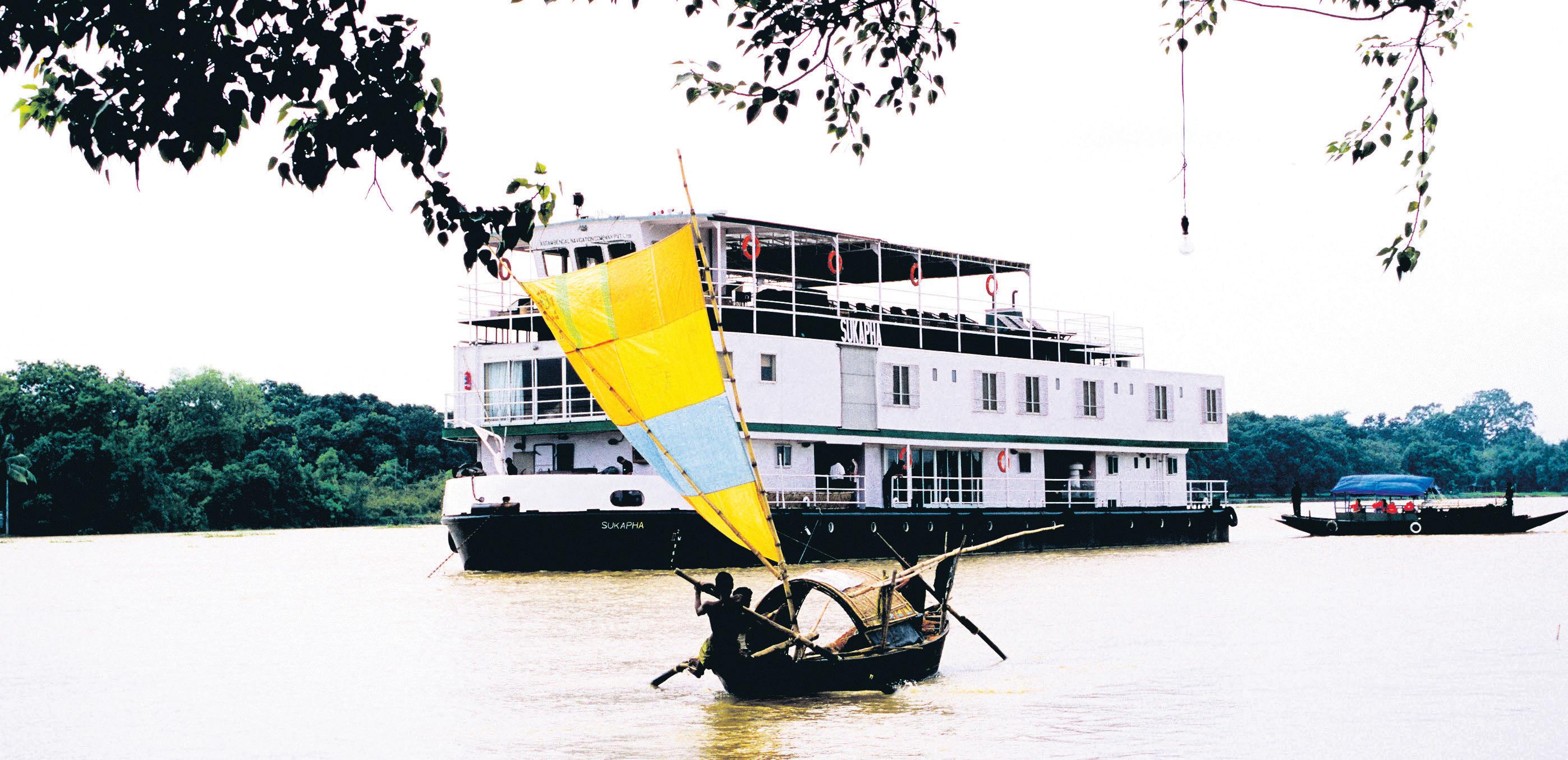
It was our welcome dinner at the gracious Oberoi Grand Hotel in Kolkata.
I entered the dining room late, having made a quick dash to collect my shirt from the tailors, Jaggi and Co.
I was ushered in to join several English couples who had earlier cast somewhat disapproving looks at me as I stood in the lift covered in the pink dye that is so liberally tossed about during Holi. Together we would cruise upstream on the Hugli river.
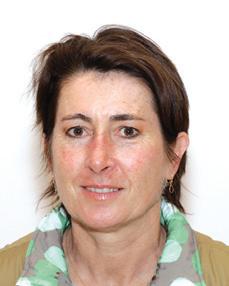
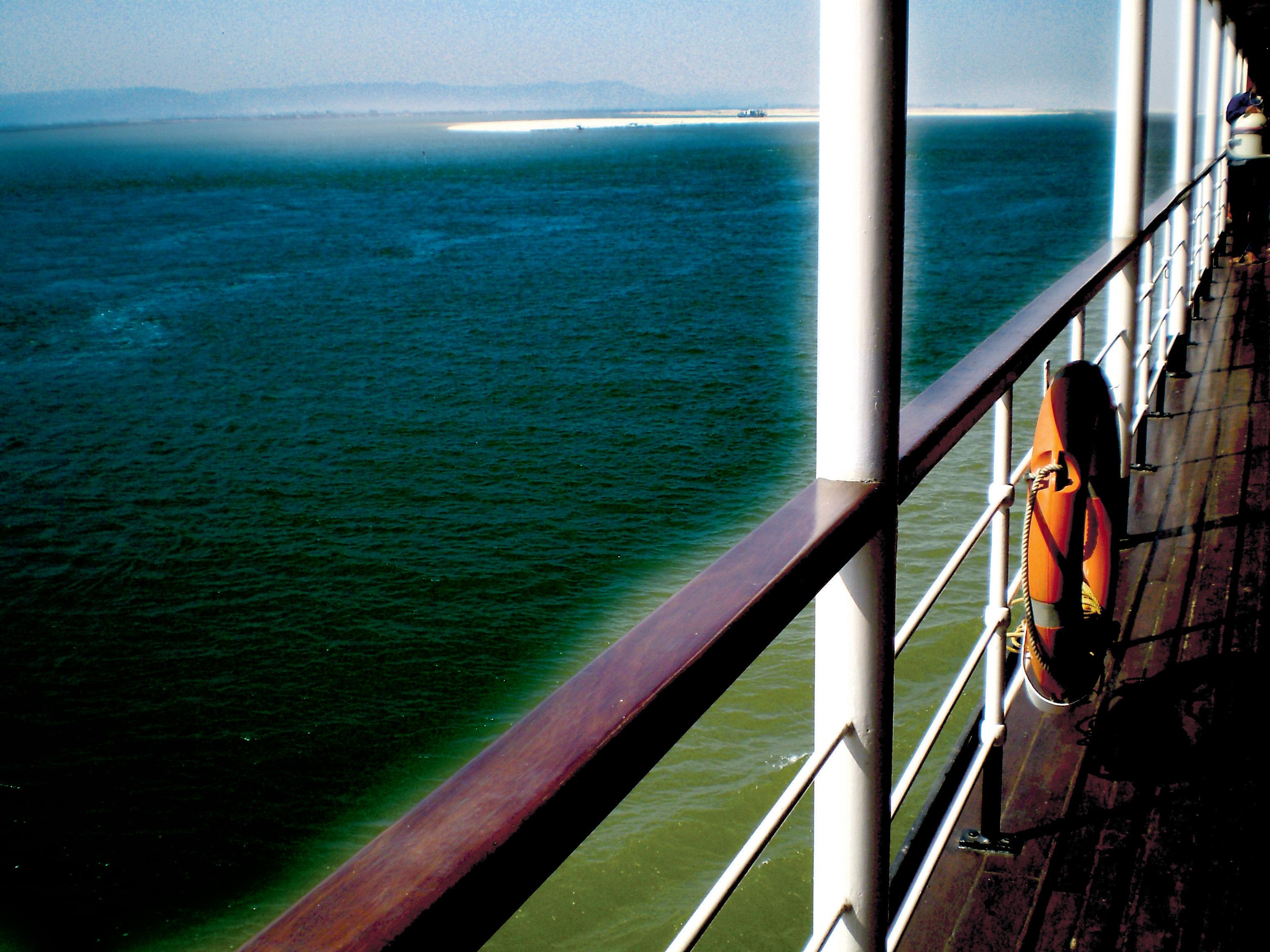
The next morning we departed Kolkata in a cramped bonerattling bus, the English group having departed in a hurry after securing the superior bus with air conditioning. Off on a dusty highway once known as the Grand Trunk Road, our driver possessing a bearing that inspired confidence in his ability to do battle if perhaps not to drive, the bus bearing the scars of previous journeys, testimony that driving in India can be hazardous. Long
distance trucks travelled one behind the other and amongst them, all manner of vehicles.
The noise of tooting horns and exhausts soon subsided, and we were surrounded by the green lushness of rural India.

The Hugli runs through the heartland of West Bengal to Kolkata and beyond to the Bay of Bengal. It was once a busy trade route that brought ships from Europe to Patna along with the Portuguese, Danish, Dutch, French and British who established settlements along its shores, providing a transport route onto Agra, Delhi, Varanasi and Lucknow. The river is narrow and the landscape is resplendent with the green of jute fields, mango orchards, palms and rice paddies.
Several hours later, with an inside temperature gauge that swung between 32 and 37 degrees Celsius, we arrived at the sleepy town of Chandernagore, established as a trading post by the French in 1673. I walked along the promenade and visited the former French Governor’s residence. Men rode by on bicycles. Otherwise there was
French came to the Hugli after the Moghuls drove out the Portuguese in 1632, who had earlier established a settlement in 1537 near Bandel, a misspelling of the Arabic word for harbour, suggesting that the Arabs had been there even earlier. At Bandel we viewed the Imambara, dating from 1841, one of the most famous Shiya pilgrimage centres in West Bengal built by Hajee Mohummud Mohsin at an exorbitant cost.
The next day we arrived at Kalna to visit the intricately designed Rajbari temples, a unique mix of Bengal temple architecture built of bricks with intricate terracotta designs. The Nabakailas Temples, built in 1809 by the Bardhaman Maharaja, contains 108 sloped roofed Shiva temples arranged in two circles. The Pratapeshwar temple, built in 1849 contains terracotta plaques depicting themes of Hindu epics. The other temples are the Lalji temple built in 1739, the oldest in the complex, and Krishnachandra temple built in 1751.
In Murshidabad, the once great capital of the Nawabs, we visited Hazarduari Palace, built
Colonel Duncan McLeod. The palace is fanciful and enormous in scale, with huge balustrades and more than a thousand doors along its vast corridors. Inside each of the huge rooms are collections of weapons, marble statues, porcelain, books, maps and numerous portraits and landscape paintings by Dutch, French and Italian artists.
The Palace was busy with families and their children who gazed up at the lofty ceiling. In wagons led by horses, our group was transported to Katra mosque, built in 1724, with huge domes and high minarets. I walked instead. Murshidabad is a pleasant town, its denizens friendly. All seemed to know I was following the horses, and would point the way ahead. As I turned a corner, I heard young children laughing on their way to school, saw a young boy having his hair cut, an elderly man asked if I could take his photo, and I admired beautiful lengths of fabric that had been hung out to dry.
After Murshidabad we sailed onto Jangipur, a temple complex built in 1714 – 1793 by Rani Bhabani, the landlord of Natore.
of Bengal terracotta art.
On arriving at the village of Akbarpur, we were surrounded by women and young children, some curious, some hoping to sell us cheroots and woven cotton textile sheets made locally. We moored just before nightfall at a small village. I ventured off on a short walk, finding the market by the light of lanterns that were burning, the vendors long since having ended their day, the women now relaxed and engaged in friendly conversation. I was unnoticed away from the light of their lanterns, and this was the special moment which travellers hope to experience, of what life is like for those who live here. We entered the Farakka feeder canal to pass through the Farakka Lock Gate. Soon after, we entered the mighty river Ganges so wide that the banks were barely visible. The boat rounded a bend in the river and beyond it were vast fields. The women wearing their brightly coloured saris stopped working to gaze at us and against such a brilliance of green, it made for an amazing sight. Several Gangetic dolphins came into view, the landscape changed becoming much drier, and so ended my journey on the Hugli.

Matiari children greet cruise passengers





We entered the mighty river Ganges, so wide that the banks were barely visible.
While the cruise ship I travelled on no longer operates, the highly recommended Assam Bengal Navigation’s Sukapha does, an experience I find not dissimilar to travelling with friends. Assam Bengal Navigation operates cruises from Kolkata to Farakka on the Hugli, and from Farakka to Patna on the Ganges. The cruises may be taken separately or combined. The Sukapha is compact at 40 metres long and with a maximum of 24 guests; it maintains an onboard ambience convivial to relaxation. Cabins are spacious with a lounge, dining and observation deck for viewing the passing scenery. Contact: India: Assam Bengal Navigation Co. Tel: 9192070 42330 E-mail: sales@assambengal.in Website: www.assambengalnavigation.com


Singapore Airlines flies from Australia to Singapore with connections to destinations across India including Kolkata.
in Kolkata To experience exemplary service in gracious surrounds, the Oberoi Grand is a hotel that harks back to a bygone era. Contact Tel: 91 33 2249 2323 email reservations@oberoi-cal.com or www.oberoihotels.com

 BY LEANNE WOODWARD
BY LEANNE WOODWARD
With recent extensive media attention covering incidents of rape in India, the Indian government must be feeling some pressure to act more diligently toward such horrendous acts, and to start improving awareness about the importance of treating women decently and with value.
India, although part of the modern world, is also very traditional. Women still largely hold traditional roles of managing households, of being housewives and mothers. At the same time, many women still face issues of child marriage, gendercide, rape and its shame and stigma, forced marriages, physical and/or mental abuse, widowed and outcaste, and of having less opportunity than their male counterparts in work and education. The Indian government is yet to address these issues adequately, according to modern views of basic human rights.
According to the 2011 Indian census, there are 94 women to every 100 men. Surely if not now, at some stage Indian women will collectively find their voice and when this happens, this 50% of the population should be hard to ignore. Time is just waiting for the day when Indian women realise the influence they possess which presently lies latent in their hands, that will impact decisions and values of the whole country, and give them the power to run their own lives.
To facilitate empowerment of Indian women including the most destitute, I found that there are many organisations currently working towards this objective. I met the founder of the Indian Women’s Movement, Ms Staci Luton who is passionate about social justice and empowerment of women. Her future dream is to set up welfare centres/sanctuaries across India that will cater to raped, abused, and ostracized women. These sanctuaries will provide compassion, safety, therapy, support and education, with the aim of reintroducing these women back into society as more empowered women. Ms Luton is
a graduate of American Indian studies, sociology, international relations and peacekeeping, and her studies interested her in the cause of empowerment of women in India. Many of Ms Luton’s projects and work will be done under the umbrella of the Indian Women’s Movement, IWM (www.indianwomensmovement. com). Maharaja Ramlaxman Singh Ratlam, co-founder of IWM, outlines the organisation’s commitment to giving of aid without discrimination. “India is changing. We now see more equal opportunities than ever before. We also see the destitute, persecuted and people in need in all communities. In all castes and creeds there are women who are rich and poor, abused and ostracized,” he says.
A current project of the IWM now in the pilot stage, is the development of ‘shakti’ meetings throughout India. Shakti meetings are run by local concerned women, who meet to identify specific needs of women in their local area and who then endeavour to address these needs with the help of the IWM. Ladies interested in participating or starting up a group contact the IWM directly.
The organisation relies largely on the generosity of people through donations, gifts of new and used toys, clothes, sewing machines, books and fabric. Spreading the word helps create awareness, and the IWM also welcomes volunteers.
In 2012, the University of NSW
sent a group of volunteer students to teach in a women’s education centre in Rajasthan, run by one of the non-government organisations (NGO) endorsed by the IWM.
The IWM links people to these endorsed NGOs via their website. IWM-endorsed organisations do real grassroots work and are not motivated by ego or profit; but simply by empowering and helping women in need. Two such NGOs are Sambhali Trust and Udaan.
The Sambhali Trust whose motto is ‘Empowering women of today and tomorrow’, was founded by Govind Singh Rathore in 2006. Govind lost his father at the age of 14. As the oldest male member of the family, he was taken out of school to become the head of the household. It indicated a patriarchal society in which a widowed woman could have no status and could be outcast because of unforseen and uncontrollable circumstances. Govind’s experience through the women in his life gave him motivation to start the Sambhali Trust.
Today the organisation runs 12 programs, looking after 600 women in Jodhpur. This is possible thanks to the support of benefactors like Mr Tony Vila from the Lonely Planet Foundation, and Rotary International, including funds raised through the sale of products produced by the graduates of the sewing program.
The Sambhali Trust helps
empower women through knowledge. They run classes for young children right through to adult women in English and mathematics, in hygiene principles, and in textiles and sewing. Graduates of the latter can earn from their learnt skills by producing garments, manchester and handmade toys which are sold at the Sambhali boutique and online. Online purchases can be made at www.sambhali-trust.org/.
Another program offered by the Sambhali Trust assists in setting up local self-help groups. Women in these groups devise methods of saving money so that they are able to take out loans and start a business. The program helps women take control of their lives and get on a path to independence.
Udaan
Udaan or ‘Wings to imagination’ (www.udaanforwomen.org), is an organisation principally working in the city of Jaipur. Shiva Naruka founded this organisation in 2011, and is yet to be recognised as an NGO as the application process takes 3 years. Shiva presently works without any assistance from the government, but thankfully, her family openly supports her choice of helping empower women and children in need. They have allowed her to use the home as an office, a school and a meeting place. From time to time Shiva receives words of discouragement; she understands not all people share her family’s openness about
‘Shakti’ meetings are run by local concerned women, who meet to identify specific needs of women in their local area and who then endeavour to address these needs with the help of the IWM.

helping the poorest and most outcast of women.
Through Udaan, Shiva offers English language classes to help make ‘globally competent citizens’. Udaan also offers education and support to women and their children in issues of dowry, infanticide, marriage, widowhood, woman empowerment, and empowering one’s own children. Shiva says, “It is important to teach mothers not to put their children into a box, but rather to empower them so that they will grow wings to bring their ideas into reality.” She adds, “India should be careful about how they handle children, because they turn out as they are raised. Parents and peers need to change their ideas about widows, dowry, infanticide, education and women being empowered, so that their children will grow up and adopt the same ideas”.
Apart from increasing global awareness of what’s being done currently to empower women in India, there is the need for a change in the culture and perception of women and their concerns. Indian women would greatly benefit through support from outside India via individuals and organisations, and through political pressure. By donating to the above organisations, Australians have the opportunity to participate in many ways to help make these changes happen.
The New Year brings with it the opportunity to take on new challenges and realizing long held goals. Whether you wish to lose weight, purchase a home or take this prime opportunity to purchase an Investment Property, there’s no time like the start of 2013 to get the ball rolling. I propose to ask you this question when is the best time to purchase a property?
Much has been written and published by all media reporters and some misguided economists about this topic; particularly in 2011 and 2012. They had predicted property crashes, and falls of up to 50% and that the economy would not recover for many, many years to come. Did you ask your brother, or brother in-law who had read in any of the newspapers or heard some economist who had said or written that this is not a good time to buy, or did you hear from your accountant or
Financial/broker adviser who were trying to sell you something or other in a get rich scheme.
Let me tell you about all of these reports which we all have seemed to follow like a lemming to our own detriment (oh let me explain what a lemming is. A lemming is “doomed conformist” a member of a large group of people who blindly follow one another on a course of action that will lead to destruction for all of them) these people have their own agenda and that is to sell newspapers and get unwanted and unnecessary media coverage, and most of them are not qualified to make such comments or give such advice. Having cleared that point let me explain what, and why I perceive the future to be in our industry.
For all of you reader’s that have been following my column over the many years where I have indicated that the property market will rebound in 2013 and 2014 with property price increases that could rise by up to 10 per cent per year; what are the reasons?.
We have all heard of the expression history repeats itself; The HIA-CBA Housing Affordability index shows that national affordability in the September quarter 2012 rose to the highest level since 2009 to be just shy of the highest level in a decade.
When the December quarter data is available around the middle of February, affordability will have had a further significant boost, perhaps to be at or near a multidecade high.
This is because during the December quarter, mortgage interest rates fell by around 40 basis points as the Reserve Bank sliced the official cash rate by 50 basis points. The level of interest rates is a critically important aspect in determining whether or not buyers are able to step up in the property market and borrow more and pay more for the property.
Another reason behind my expectations of a strong rise in property prices this year, are linked to issues associated with housing affordability (interest rates, current house prices and wages) plus the consistently low unemployment rate, a tight rental
DISCLAIMER:
market and a likely positive wealth effect from what has been a strong lift in the stock market. Acceleration in population growth is another factor that is likely to add to the underlying demand for housing.
Furthermore, I draw your attention to the comparison of the economic conditions of 2003 and the Great GFC conditions of 2009. In 2003 when mortgage interest rates were under 7% (like now) and the unemployment rate was at 6 per cent or less (like now), annual house price growth averaged over 15 per cent during a two-year period. In other words, house prices rose by more than 30 per cent in just two years.
Even the GFC-inspired dip in mortgage interest rates in 2009, coincidently when the unemployment rate was anchored below 6 per cent, saw a peak 18.8 per cent annual lift in house prices unfold during 2010.
Adding to these bullish factors is the fact that the unemployment rate has remained low, below 5.5%. This means that the scope for rising confidence for borrowing is favourable. Added to that, consumer finances are in sound shape. Saving levels have been replenished over recent years and many borrowers have taken advantage of the current interest rate cutting cycle to pay off the principal in their current mortgage.

This all adds to a resounding confidence boost in the market place and the fact that property market has never been in decline for more than 2 years in a row. May I point out a study of the investment cycle and where I believe it to be right at the moment? A study of the graph to our left indicates that this is the best time to be investing in property as I believe we are now poised to get the best capital growth in property investment for the foreseeable future.
May I also add that MBIC has had significantly more enquiry for property in the first 10 days of 2013 than in the last 4 months of 2012 and it is somewhat interesting to note that property prices in Melbourne in the first ten days of 2013 have already risen by 0.6 per cent as reported by RP data. .
All the fundamental factors are aligned to support higher house prices in 2013. The fact that so many people are optimistic on property prices only adds to the scope for a sharp rebound in prices as there is a rush to catch up through pent-up demand needing to be satisfied.
Favourable affordability, low unemployment and interest rates, and with the pent-up demand all point to what could be a corker of a year for property price growth.
MBIC with its associated business partners offer a range of services for your consideration:
• How to use your home equity as “leverage” and purchase an investment property without a cash deposit?
• How to invest in property using your Superannuation?
• How to qualify for $100,000 from the government to purchase NRAS property?

MBIC will be holding the 1st seminar for the year on Wednesday 20th February 2013 at 7pm.
Should you have any question or would like to seek further assistance on property investment options, please feel free to call me on 03 9813 8188, Mobile: 0417 483 355 E-mail: carlo@mbic.com.au
We promise not to disappoint you.
MBIC has used their best endeavours’ to ensure that the information contained in this article is correct. However, neither MBIC nor its, licensors or suppliers (nor their respective directors, affiliates or employees), accept any liability (direct or indirect) for any injury, loss, claim, damage or any incidental or consequential damages, including but not limited to lost profits or savings, arising out of or in any way connected with the use of any information , contained in this article. Or any error, omission or defect in the information. Therefore, the information contained in this article should not be relied upon and purchasers should make their own enquiries and seek legal and financial advice in respect to any property or investment, before committing to purchase.
All parents would like the school year to be one of academic success and growth in self-confidence for their children. To achieve this, it is often wise for some time to be allocated towards planning for the year ahead. This helps manage the transition from holidays to school and also assists in ensuring that time is well utilised during the school term.
Students themselves are used to timetables and plans. The school day is structured around timetables and each day follows a predictable pattern, each week or fortnight is repeated, and the student has a sense of what to expect.
In the first instance, a student will need to settle into their new class(es). For students in primary school this will mean adjusting to a new teacher, new classroom rules and expectations.
For students in high school, there are different kinds of adjustments. For those entering Year 7 there is a major transition that needs to be understood.
Students are going from being the leaders of their primary school to being the youngest in high school. Other features of settling into Year 7 include:
• Moving from having 1 full time classroom teacher to a day divided into ‘sessions’ or ‘periods’. There can be up to 8 sessions per day each of around 42 minutes or 4 sessions per day of just over 70 minutes

• Moving to having many teachers instead of one teacher. This means learning to adapt to up to 13 or 14 different teachers, varied classroom expectations, different teaching styles and different classroom cohorts
• Moving from being in a cohort of 30 to 60, to moving to a year level of up to 200 students who come from numerous schools and backgrounds.
• Changing the friendship group as new friends are made and older friends may find other new peers. Moreover, some friends may be going to other schools and thus there will be a change to the friendship circle.
• Subject specialisation is another aspect of Year 7 that students
will have to get used to when they transition to high school.
For students entering Year 9 there will be the opportunity to study elective subjects, which is a further specialisation that students need to adjust to. For students entering the senior years there is academic pressure that students will feel, coming both from school staff and also from their peers. Years 11 and 12 are serious years and cannot be treated lightly.
Given the changes and transitions from one year to the next, the need to structure time becomes apparent. This means having an ‘after-school’ timetable that is followed in the afternoon and evening, once the school day is over.
It may seem odd to expect students to do academic work at the end of the school day. However, the expectation from school is that a little bit of academic time be allocated whether for homework, research, revision or reading, for a few nights per week.
Of course, many students will also have other structured activities such as music or dance classes, tutoring, sports training and so forth. These activities also take time and are often scheduled after school hours. Thus, there is quite a lot of complexity to manage.
A crucial skill for students to learn is that of prioritising. Learning to prioritise means learning how to manage tasks in terms of order of importance. This can be tricky and can take a while to learn because it is common for external factors to dictate what is done and when. That is, homework that is due will
take on a higher priority in the student’s mind than revising for next week’s quiz.
As students gain experience they should learn that doing steady work even when there are no demands from school, is very important. This is because academic work done is never wasted and a student who keeps up to date by reading over the days’ notes each evening will be ‘working ahead’ and minimising later stress.

High school students are encouraged to have a timetable that runs from 4pm until 9pm (or later for senior students) on weekdays. Students need a break from school, time to eat and refresh, and time for just ‘chilling’. This is crucial to integrate into the 4pm to 9pm time slot. They might have a favourite television show, they will need time to have dinner and so on. Apart from this between an hour and up to 3 hours (for senior students with no other activities), should be possible to structure for schoolwork from Monday to Thursday. Friday should be a night off.
It should also be very possible for students of all high school years to spend a total of 4 hours or more over the weekend that are allocated to school.
To create a timetable, students need to create a table that shows the days of the week and the hours from 4pm until 9pm. The first thing that must be done is for students to write in any and all activities that they know. Cricket training or tutoring, for example, must be written in place into the timetable. Thereafter it should be clear where there is
room to allocate time for study and homework.
It can be very helpful for students to use colour when marking in time for study. This means homework can be allocated one colour, revision another colour and reading a third colour. In this way the timetable becomes highly visual and easy to read.
If students create their own timetable under supervision and with support where required, they have the opportunity to demonstrate ownership over it. When students take ownership over what they do they tend to take things more seriously and personalise what they do. They are more likely to value the timetable and follow it. In this way, a student is firstly accountable to himself or herself. This is very important, as it is a basic aspect of maturing as a student.
Many students do not like to be told what to do, particularly as they mature. The advantage of timetabling is that they are accountable to their own structure. This does not mean that parents have no role. Parents play a crucial role in oversight, monitoring, supporting and guiding.
Thus, if a student makes two copies of the timetable, one can be placed on the fridge and parents can encourage that it be adhered to. A parent can also inquire about how maths is going, or reading, or whatever has been done when their child has spent time in their room.
Note that just because a student spends time alone in their room in following their timetable does not mean that this time is productive. Parents should not be put off from asking to see what was done during this time.
Some students do not like to include their parents, and simply say that they followed the timetable. But parents need to ensure that they are not being ‘shut out’. Asking for inclusion is appropriate, but it must not come across as being aggressive or intrusive. Rather it should be supportive and encouraging.
Adjusting to the school year can take some time. It is important that students get time to settle. After-hours timetables can be useful in helping students to structure their time so that it is productive and so that they can achieve their academic goals.
As students begin a new academic year, putting together a clear routine of study and play is essential
As students gain experience they should learn that doing steady work even when there are no demands from school, is very important
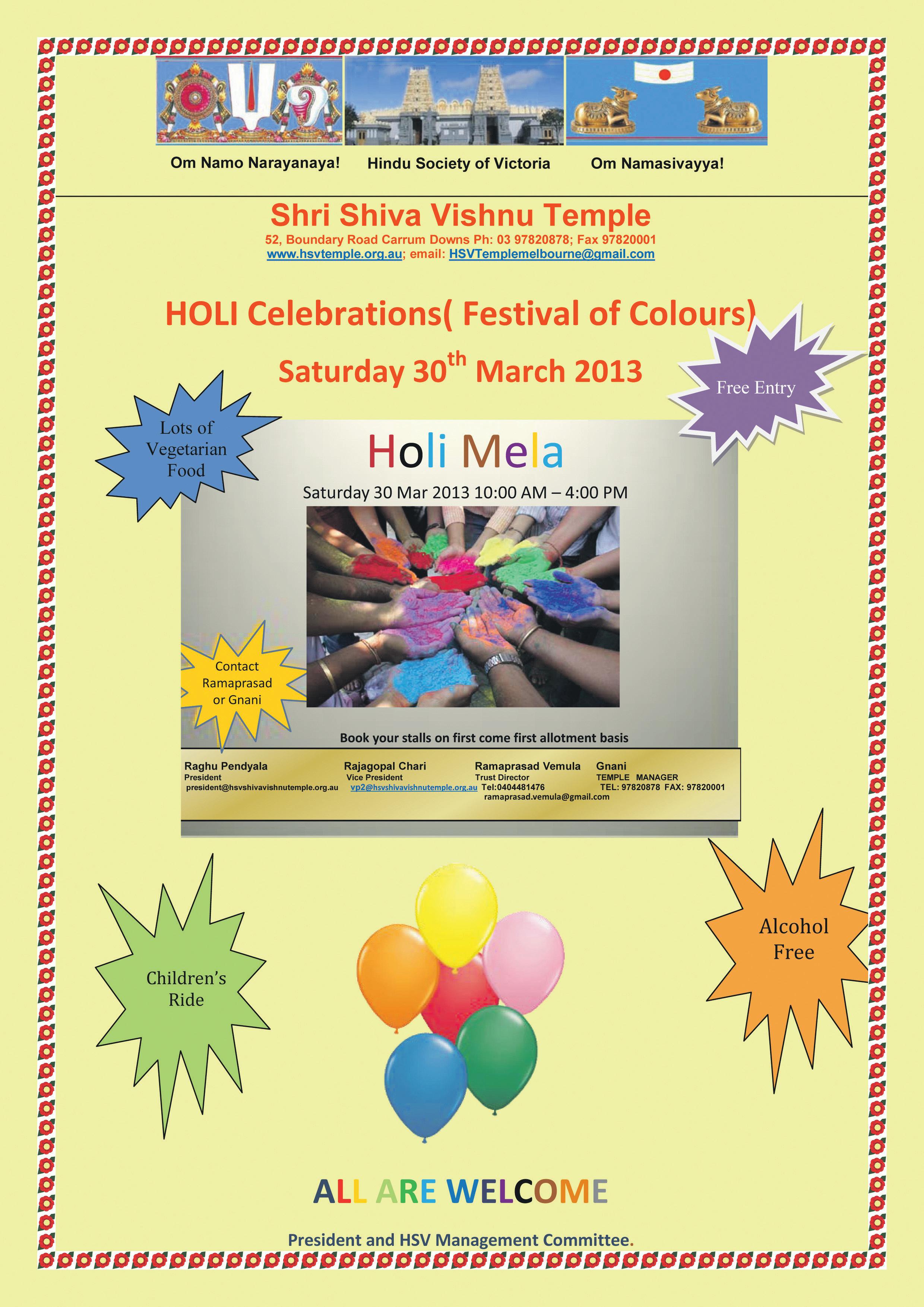
oing for a job interview entails much more than brushing up on your general knowledge, presentation skills and dressing up corporate style. Your face, hands and hair also help in presenting a professional and efficient appearance.

So you think you are ready for that all important job interview tomorrow. You have read up on your core competency and current trends in the market. You probably know some graphs and figures by heart. You have also kept a sharply ironed trouser suit ready with a pin-striped shirt. But hang on! Did you also check the condition of your nails? Or for that matter, your hair? Most young people will make all the right moves for an interview and yet not pay close attention to their appearance. Here are some dos and don’ts for the big day.
Make sure you have not been partying hard or staying up late a few nights before the job interview. Too many late nights and alcohol can give the skin a dull, lacklustre appearance, including dark circles. So a week before your interview, ensure you drink enough water on a daily basis and sleep for at least 7 hours. That way you wake up fresh and well rested on the day of the interview.
If you do have dark circles, use a concealer to minimise their appearance. Use a good moisturiser before you apply any foundation. Try and go easy on the base and use a light foundation, if at all. If you can go without, even better. There is a chance you will sweat and the foundation may look patchy. Go easy on the eye make-up no matter what kind of job for which you have applied. Less is always more for these things. Minimal foundation followed by light,
translucent powder with a hint of a blush is enough make-up for the face.
For the eyes, use an eye pencil to outline them. Avoid mascara if you can, especially if you wear contact lenses. It can smudge if something gets into your eyes and they start watering.
If you love your eye shadow, use a matte variant of a subtle shade like a peach or a dull pink.
Bright glossy blues and greens are a strict no-no. You don’t want to look like a piece of bling.
With the lips too, go with the subtle look. No matter what shade of outfit you are wearing, a sober shade of nude will match it. Go with a nude, a brown or a matte shade of pink. Stay away from red lipstick no matter how good it looks on you. It is a stereotypical prejudice but for some reason, red lipstick is associated with fun times and glamour. It won’t add to a serious,
businesslike demeanour in the least.
Avoid lip gloss with a shine for the same reason. Glossy and bright shades work if you are on a date, not if you are trying to impress someone to give you that job.
Whether short or long, your hair must look neat. You can gel it in place or tie it up in a neat ponytail. For those of you who have highlights, see if you can tone them down by tying up your hair. Or if you could have them coloured in a shade of brown to give you a grown-up look. Avoid fancy or complicated hairdos which could give you a headache or come undone at an inopportune moment.
Ideally, if you have short hair, wear a hair band and keep your hair away from your face. If you have hair that can be tied
up, a neat, slicked back ponytail works best. None of that bedhead look or an unruly plait like the Bollywood ladies, will work. If you must leave your hair loose, make sure it is neatly combed out, doesn’t look unruly and that bangs don’t keep falling on your face. It can be distracting and will not let you focus during the interview.
You will be surprised how many people notice the state of your hands. So, if you have long nails, make sure they are clean and filed into shape. Chipped nail polish is a no-no, as is a bright shade of red. If you keep your nails clipped short, again, make sure there is no dirt behind the nails. It can be a big turn off to shake hands with someone who has dirty nails. You can go with painted nails for an interview but make sure it is a shade of pink or brown that doesn’t clash with the rest of your make-up and clothes. It should not jar either – I am referring to those dark shades of reds and almostblack shades that some young people prefer.
Ditto for toenails too, especially if you are wearing opentoed shoes.
Make sure your shoes are well polished and clean. No scruffy sneakers or shoes with heels that have worn off.

Keep your jewellery basic and simple. Tiny studs in the ears and a simple bracelet or bangle should suffice. A gold or silver chain tucked under your collar is not likely to be visible so that is optional.
Avoid wearing long beads and blingy jewellery. Too many rings and bangles, long and flashy earrings and long chains around your neck may convey the wrong impression. After all, you want to be taken seriously at the interview, not dismissed as a punk.
So go easy on jewellery. A classic pearl necklace and pearl studs should be enough, no matter what kind of job you are applying for.
Keep these tips in mind when you are going for a job interview and you will be able to create the right impression, no matter how tough the interviewer may be.
You can go with painted nails for an interview but make sure it is a shade of pink or brown that doesn’t clash with the rest of your make-up and clothes
A week before your interview, ensure you drink enough water on a daily basis and sleep for at least 7 hours




This year is advancing way too fast for me. Wasn’t it just yesterday we were celebrating New Year and lo, in a blink of an eye, it’s February. The month of love, Cupid’s playtime or whatever you want to call it, all over the world, it’s time to celebrate Valentine’s Day. And what a wonderful time of year it is to slow down and take stock of the romantic situation in your life. To make that special person feel fully loved. And if things haven’t been going too well, it is the best time to start making amends by going out of your way and making an extra effort on Valentine’s Day.
Let’s face it, while there’s a sea of information and advice out there on what to do, how to dress, where to go and the right gift to buy for your Valentine, there’s not much about the things to avoid. So here’s what you must never do on Valentine’s Day.
The worst thing you can do on Valentine’s Day is, not do anything. Don’t make that mistake: not only is it an unforgiveable faux pas, it also breaks your loved one’s heart. It gives the message that you don’t consider them important enough to make an effort on this very special day. So please, whatever you do, just don’t do ‘nothing’! Take the initiative to make your Valentine feel special. Arrange for a romantic day together and don’t forget the flowers and a gift - the costlier the better, but even a small gesture means a lot. Try to be generous; it only comes once a year.

For the boys, if you can’t afford a lavish dinner date, try arranging something intimate and special at home. Taking her to a fast food outlet doesn’t say much about you;
it lacks style, looks cheap and does not feel special at all. Instead, take the initiative to cook for her. Set up a romantic table for two complete with candles, flowers and music. Ask her to wear her favourite gown, and dress up to impress as well. Even a night in on Valentine’s Day can be made special.
If you’re single, what you absolutely mustn’t do is accept an invitation to join a couple on their night out on Valentine’s Day. This is a romantic day and three can be a crowd, which will very likely leave you uncomfortable. So thank your friends for their good intentions but decline graciously. Being unattached doesn’t mean you have to sit around moping on Valentine’s Day. Instead, hook up with friends who are in the same boat, watch a movie, go out for dinner and have a fun night out in town. With Cupid out to strike, who knows, maybe you will meet someone special.
Don’t go on a first date or worst still, on a blind date on Valentine’s Day. This is never a good idea as your judgement and actions could be influenced by the pressure of timing and the situation. Everyone around you is in a romantic mood, and you could feel obliged to go with the flow (if only for the other person’s sake), leading to mistakes you might regret later. You might even overlook qualities that you would ordinarily find off-putting in a prospective partner.
If your relationship is on the rocks you might not want to celebrate the day dedicated to
lovers, but do keep track of the calendar and whatever you do, please don’t break up on Valentine’s Day.
It’s just not worth it. Not only will you break someone’s heart on this sacred day for love, but you will create unpleasant memories for yourself for years to come. Forthcoming V-Days will remind you of the relationship that ended on that day and while there will be relief, there could even be some regret. So save yourself the baggage and hold up for a day or two after Valentine’s Day to call off a relationship.

While it is recommended you splurge a little on Valentine’s Day, it is definitely not worth getting into debt. So be mindful of not breaking your budget as a single day of enjoyment could lead to financial burdens which, in many cases, will strain the relationship with that same person on whom

The worst thing you can do on Valentine’s Day is, not do anything.
you splashed all your dough. Girls like to be made to feel like princesses on Lover’s New Year, but they resent having to pinch pennies for months afterwards to pay for the experience.
It is not a good idea to set yourself up for disappointment by expecting too much. If you expect little and get little, even that will make you happy. And if something extraordinary happens, it will be a bonus.
Don’t compare your gifts with those that your friends have received. Be thankful for a considerate partner who made an effort to make you feel special and loved. Show your appreciation by reciprocating the gesture. Comparing gifts is a bad idea. After all, isn’t it the thought that counts?
Have a memorable Valentine’s Day!
If you can’t afford a lavish dinner date, try arranging something intimate and special at home.
For all those lovers with romantic ideas, here’s what not to do as you celebrate this special day of romance, writes FARZANA SHAKIR
S
Seeking suitable match, a non smoker, ideally aged between 50 and 60. For fair, young looking Hindu lady, 5’ 2”, 54, divorced, veg, Australian citizen. Caste no bar. Please contact 0449 623 316 or email alpine_rhapsody@hotmail.com
Suitable well-settled / professional match for Punjabi Arora, beautiful, never married, 39 / 166, qualified IT professional. GSOH with good family values. Brought up in India. Working in MNC Sydney. Australian citizen. Early marriage. Serious enquiries only. Email details with photo: ausgirl101@gmail.com

Seeking match for tall, good looking, slim, fair, educated, working Hindu Khatri girl, 25, brought up in Sydney. Well educated and settled family. Boy with similar background preferred. Email: 1169ab@gmail.com
Seeking genuine, compatible, well educated, employed / business match from respectable family, broad minded /mature outlook, independent, Indian background, age 50+ for caring, honest, Indian Christian divorcee, Australian citizen, well settled in Perth, 50 years, 5’3” tall, younger looking, attractive graduate nurse, employed. Caste no bar. Please send profile with photo to email emily.lotus@hotmail.com
Seeking suitable match (from Australia, never married) for Hindu girl, 35 years, Chartered Accountant, non-veg, living in Australia over 25 years, with eastern and western family values. Please email with all details on ganesh2011v@gmail.com
Well settled / professional alliance invited from Australia / India for 41/165, unmarried, charming Punjabi Khatri girl, family oriented and responsible, IT professional, working in Sydney. Australian citizen. Early marriage. Can relocate. Serious proposals only. Email profile with recent photo: sydgirl09@ gmail.com
Respectable Sikh Family of New Delhi seeks alliance for their smart good looking sweet natured family oriented daughter 24/165cms, B.Com Graduate, Primary Teacher, looking for a well educated boy from a cultured family well settled in Business/ Industry/Profession. Girl and Parents in Sydney from end December until mid January. Call 0431 337 881
37 yrs old Brahmin never married graduate girl currently visiting Australia. Looking for Australian citizen preferably unmarried. Whole family settled here. Belongs to status business family. Applied for permanent residency earlier. Contact with photo and details urgently at npkhanna@ymail.com
SEEKING BRIDES
Seeking suitable match for 37 years, good looking Gujarati Brahmin boy, 5’7” Australian citizen caste no bar. Born and brought up in Mumbai, India and moved to Sydney 5 years ago. Please email with details on ravi_p100@hotmail.com
Match required for a 48-yo, slim, clean shaven, Jat Sikh Aust PR living in Melb, working for a Bank, own house. I have no children but I don’t mind if she has children. Genuine enquiries only email: jat_sikh@ hotmail.com
Single tall man, often travels with work, desires to meet attractive good character single or widow lady over 40 with a view to marriage. Apply PP GPO Box 2336 Adelaide, South Australia 5000.
Seeking suitable match for a boy, 6’ tall, 31 yrs, never married, Australian Citizen, Athletic, Punjabi Khatri, reputed corporate professional. Please email your particulars with recent photo( Compulsory) on win.rocky@gmail.com or call 0430 179 273.
Compatible match for 1975 born, handsome clean-shaven Sikh Khatri boy, 5’ 9”, two Post-Graduate degrees from India and recently finished Master in I.T from Australia . Currently on temporary resident visa and working full-time in Customer Service role. Looking for welleducated, Permanent resident / Citizen girl from Sikh family background. Early marriage.
Phone: 0422 102 242 or Email: ghai07@yahoo.com










Beetroot as garnish.
I’d never seen that before. As I sat looking at my plate of tokri chaat at Chandigarh’s most popular eatery Gopal’s, the beetroot took my breath away. Long thin shreds of the vegetable brought the plate alive with colour, especially as its juices spread like tiny rivulets of maroon-and-purple over that final yogurt topping. Its beautifully earthy flavour was a perfect precursor to the explosion of taste that was to follow.
The beetroot garnish has since been adding a touch of glamour to my own salads, a bright reminder of my recent India holiday that already seems eons ago.
Wasn’t so crash hot about beetroot juice, though - a regular hotel breakfast item during my tenday tour of Kerala. Nonetheless, there’s been a fair bit of beetroot ever since I got back.
Beetroot is filled with antioxidants and minerals such as sodium, potassium and magnesium, and Vitamin C. Its bright colour comes from antioxidants called betacyanins which are fantastic for cardiovascular health, protecting blood vessels and preventing blood pressure, heart disease and stroke.

Golden beetroots, available from select grocers, are sweeter: they do not bleed or stain, as their colour is not dominating. Roasting brings out a sweet caramelized flavour. Beetroot leaves are edible as well.
Beetroot lends itself to a variety of easy preparations such as soups and salads, as well as raitas, chutneys and halwas. This last one will probably nullify any benefits of the beetroot towards cardiovascular health, but you could try beetroot chocolate cake
if you have a sweet tooth; it is definitely a healthier type of chocolate cake!
Roast Beetroot
6-8 medium beetroot
2 tsp fresh thyme
2 tsp balsamic vinegar
2 tbsp olive oil
2 tbsp honey
Salt and pepper to taste
Heat oven to 200 degrees. Scrub beetroot and trim. Cut into wedges and arrange on a lined oven tray. Mix together vinegar, olive oil, thyme and honey and pour over the beetroot. Sprinkle salt and pepper over and toss together well - use hands to ensure the beetroot is thoroughly coated. Roast for 25 minutes until the beetroot wedges are cooked through.
Roast Beetroot Salad
6-8 medium beetroot
200g walnuts
2 tsp honey
150g Danish feta
¾ cup pomegranate seeds
3 tsp light olive oil
3 tbsp balsamic vinegar
1 ½ tbsp brown sugar
Salt and pepper
Rocket leaves
Preheat oven to 200 degrees. Scrub beetroot and trim. Wrap in foil and cook in oven for about an hour or until tender when tested with skewer. Remove from oven and unfurl carefully. Stand for 10 minutes and then peel - wear disposable gloves to save hands from staining. Cut into large neat portions.
Put walnuts into small frying pan and add honey. Cook, stirring, till nuts are well-coated and heated through. Cool. Make dressing by combining olive oil, balsamic vinegar, brown sugar, salt and pepper.
To put salad together, throw in rocket leaves in deep bowl and add beetroot, pomegranate, honeyed walnuts and Danish feta (cubed or crumbled). Drizzle dressing over and toss.
Beetroot Raita
1 tbsp olive oil
1 tsp mustard seeds
1 dry red chilli
1 tsp sesame seeds
1 sprig curry leaves
Pinch asafoetida
1 cup (200g) thick Greek-style yoghurt
2 small beetroots, cooked, peeled chopped into 5mm cubes
Heat oil in a small frying pan. Add the mustard seeds and dry red chilli. Cook till chilli is blackened: this gets rid of its heat and increases its flavour. Throw in sesame seeds, curry leaves and asafoetida, and cook till sizzling.
Meanwhile, combine the yoghurt and beetroot in a bowl and season with salt and pepper. Pour tempering over straight from
the frying pan and mix, and watch the yoghurt turn into a beautiful pink.
1 large beetroot, grated
¾ tsp tamarind concentrate
3 numbers eschallots (scallions)
4 tbsp fresh grated coconut
1 tbsp chopped garlic
1-2 dry red chillies
1 tsp chana dal
1 tsp coriander seeds
1 tsp urad dal
Salt to taste
3 cloves
½ inch cinnamon stick
¼ tsp fenugreek seeds
For tempering:
1 tbsp oil
1 tsp mustard seeds
Pinch asafoetida
1 sprig curry leaves
Heat oil in a pan and add garlic, fenugreek seeds, dals, cloves, cinnamon and red chillies and cook until sizzling. Add grated beetroot, coconut and tamarind. Stir to combine. Cook till the raw
smell disappears. Cool. Process in a blender with a little water, to make a smooth paste. Add salt to taste and mix well. To temper, heat oil in a small frying pan and add mustard seeds, asafoetida and curry leaves. When it comes to a sizzle, pour over beetroot chutney.
1 kg beetroot
1/3 cup orange juice (preferably freshly squeezed)
3 tsp dry roasted and ground cumin seeds
2 tsp dry roasted and ground coriander seeds
Salt and pepper to taste
1 cup yoghurt
Roast the beetroot as explained under Roast Beetroot Salad. Cool and chop flesh up.
Process together with orange juice, cumin powder and coriander powder.
Add yoghurt, salt and pepper and mix well. Refrigerate until needed.




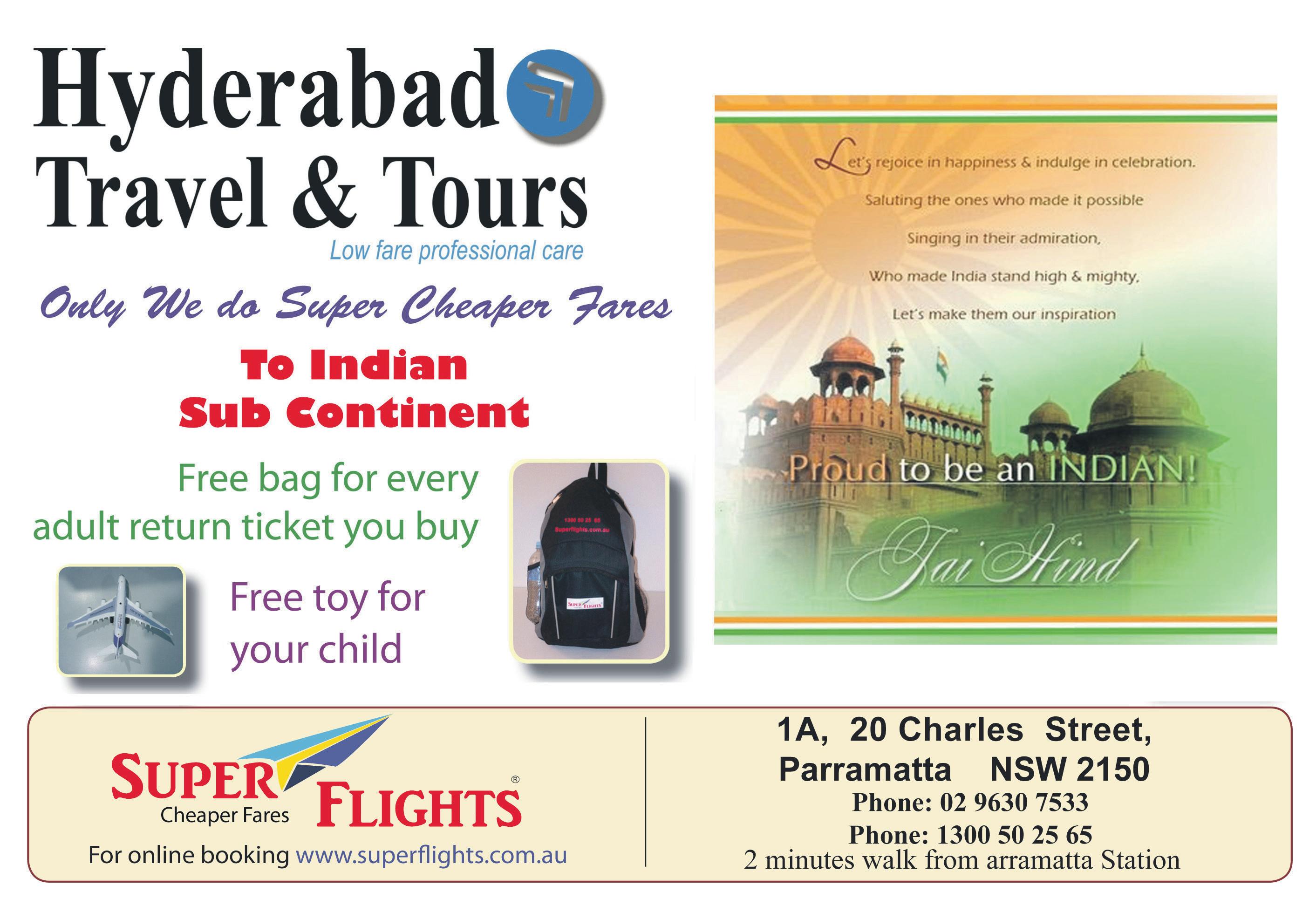



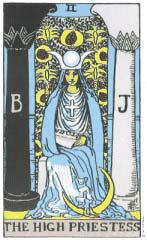
This month the cards show that your career and work life will be at an all-time peak. The month will start off with a lot of enthusiasm, interest and good fortune. There is an increase in finances too, so make sure that you keep yourself in check with your spending. Your love life will take a new turn, as you will be looking at making a commitment to the one you have loved for a while now.
The cards show that this month you will be on a real high and feeling very positive. There is travel indicated for you. You will be looking to improve your career and lifestyle both, and at bringing in more stability. There will be an idea to make some investments, but take care that you look into everything, be cautious and do not be too hasty. There will be some good news relating to a property.
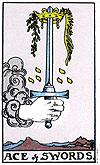



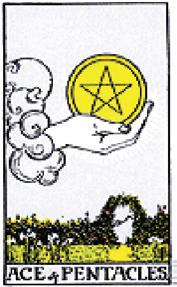



This month you will be feeling that you need someone close to you to love and hold. The cards are indicating that there may be a surprise on Valentine’s Day. Take care of your health and money. The month of love is making you feel very sensual and ready to mingle, if single. If married you will be thinking of taking your partner on a special date for V Day. However, there will be some stress around the home.
The cards are indicating a time when you have to be careful of not being too hasty. Your life may take on a completely different direction. Health will be fine, apart from some stress. Love is also in the air, even a commitment is possible. There is a new exciting month ahead for you, you will feel very energetic and have many ideas. Make sure you take things slow and think everything through in detail.
The cards indicate a time that you will spend recovering from small muscle pulls. There will be new work and an interest in stocks and shares. Take good care of the way you communicate with people, as there is an indication that you may be a bit blunt and hurt some people’s feelings. You will just be your old self, but there are sensitive people around you right now. The initial ‘M’ is very significant.
It is a time to reassess your affairs. There is a little difficulty with finances this month, but you will sort things out. You will not be feeling that great about your love life. Be careful about being too temperamental. You may not know what to do about a certain situation which concerns matters of the heart. You will not be feeling like doing much on Valentine’s Day, then again to you, it is all commercial!
The cards indicate a time of restlessness and you will be upset about certain family members. You will be looking at new opportunities, as work seems to be a little mundane. Look for a new way to relax as you are not getting enough rest, and have problems sleeping, with real nightmares that will cause you to feel very shaky. Make peace with a friend who you have not seen for a while due to a misunderstanding.
Unexpected financial gains are on the cards. Work is your top priority, and you may join someone in a new business. There is a strong chance you may be romantically linked, but make sure they are single! Look at plans to travel more extensively, making your base in another country. There will be additional stress caused by people who don’t support your projects and ideas at work. If self-employed, decide on where to go next.
You will be making some tough decisions if in business. The latter part of the month will be quite a social time for you. Be careful not to get involved in any legal issues. There is stress relating to a relative, you may not be seeing eye-to-eye lately. Take some time out, and take things through. There is an indication a new car, and red is the colour you may be thinking of buying.
This is a time when you may be feeling low, but your close friends and family will lift your spirits. You will do well financially, but there will be concerns around work or business. You will need to put in some extra time and hours to make things come together. You have some contracts that need to be sealed. If in work, go for that promotion. Health will be good. Make sure to de-stress.
Be careful of your health and minor problems. There is a chance you will be looking at buying a property or investing in a new purchase. Workwise, make sure you complete everything on time. You are slowly losing interest in work, so decide what you want to do, as there are some major decisions to make. Your love life is going smoothly. If single, try and decide what you really want out of life.

The cards indicate a time to be careful with finances and not be too hasty with purchases. Take some time out away from your city and chill out with family. Look after a younger member of the family who needs TLC. You may have a problem with one of your legs. A deep tissue massage is needed and steam treatment. Follow that gym regime. Good news relating to a birth of a child is coming.
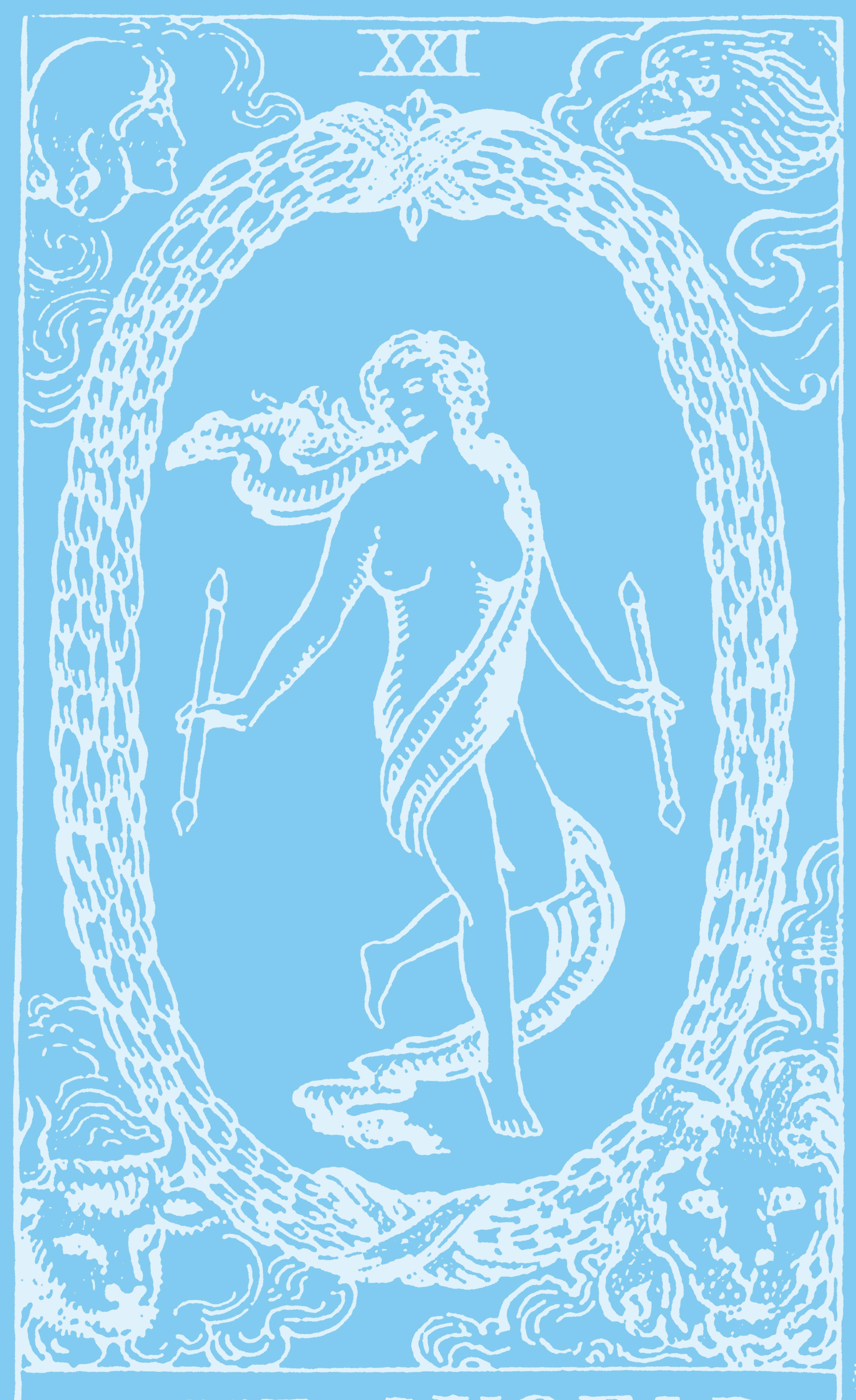
indianlink.com.au

18000 15 8 47


We provide sponsorship job assistance. We have Chef, Cook, Accounting, IT, Car Mechanic, Dental Tec, Baker and all (every) jobs. We give direct job assistance for Permanent Residency. We have sponsorship job for you and your friends in 457/RSMS/ENS visa. For sponsorship job, please call to us 0466 387 001 and fix your appointment. Or send your resume in our mail address for sponsorship job assistance.
Please contact:

Director (Marketing)
Master of commerce
In Prof Accounting (MIT, Sydney) ABN 27 740 034 490 Mobile: 0466 387 001

Email: harunaustral@gmail.com
If we are busy, please give a text mentioning your job and qualifications. We will call you later.

scenes from the hero’s personal life, Kamal Haasan’s tale of terror during the times of love, witticism, philosophizing and, yes, dancing, comes alive in a huge adrenaline rush of adventure, action, drama and other related artistic tools which never come in the way of the actor-director’s primary concern.
Kamal Haasan means business. He is here to narrate an edge-of-the-seat story of international terrorism. The rigorous research that has gone into the plot never weighs down the narration. Whether infiltrating the Al Qaeda (scarily real in the detailing and eerily cinematic in its visual sweep) or focusing on the hijinks of our hero, the creative crossovers in the narrative are achieved with the fluency of chapters in a deftly-written novel.
And yet Kamal Haasan avoids getting overly breathless in his narration. Shall we just say Vishwaroop moves at the pace that it is meant to? Neither measured nor hurried, the director negotiates the socio-political and cultural spaces in the plot with an elegant erudition. Gone is the heavily cerebral over-studied atmosphere of his earlier directorial epic Dasavatharam. Also gone is the overindulgent footage-occupancy of this actor’s recent screen outings.
Yes, Kamal Haasan dominates the show with three different avatars whose destinies intertwine in ways that one can’t reveal without giving away the plot. But that’s the way the plot unfolds. That is the way it is meant to be. The narrative in this case just can’t get enough of Kamal Haasan. Who but this actor can pull off heart-in-the-mouth never-seen stunts (action director Lee Whittaker and his associates have done a remarkable job) in the same range of vision as an elegantly performed Kathak number?
Pooja Kumar as Kamal Haasan’s beloved is charming. She has a pleasant screen presence and yes, she isn’t in awe of her awesome co-star. However, if anyone leaves a lasting impression after Mr.Haasan, it is Rahul Bose, who as an Al Qaeda chap swathes his persona in menace and terror without getting into the gritting-teeth mould.
Bose had last played a villain in Govind Nihalani’s Thakshak in 1999. It is no coincidence that he returns to the colour black in a film that in many ways owes allegiance to the dark sinister angry anti-establishment tales of Nihalani. But Kamal Haasan adds a dash of warmth and humour to the intrinsically ominous saga. He is in terror-land with his tongue firmly in cheek.
fact, it doesn’t hurt the sentiments of any section of the people except those partypoopers who think having a ball at the movies went out of style with Sholay and Chachi 420
Leave aside its sobering take on global warfare, Vishwaroop, the Hindi version of the Tamil, Telugu Vishwaroopam, is one helluva entertainer. If you’ve forgotten what edge-of-the-seat entertainment
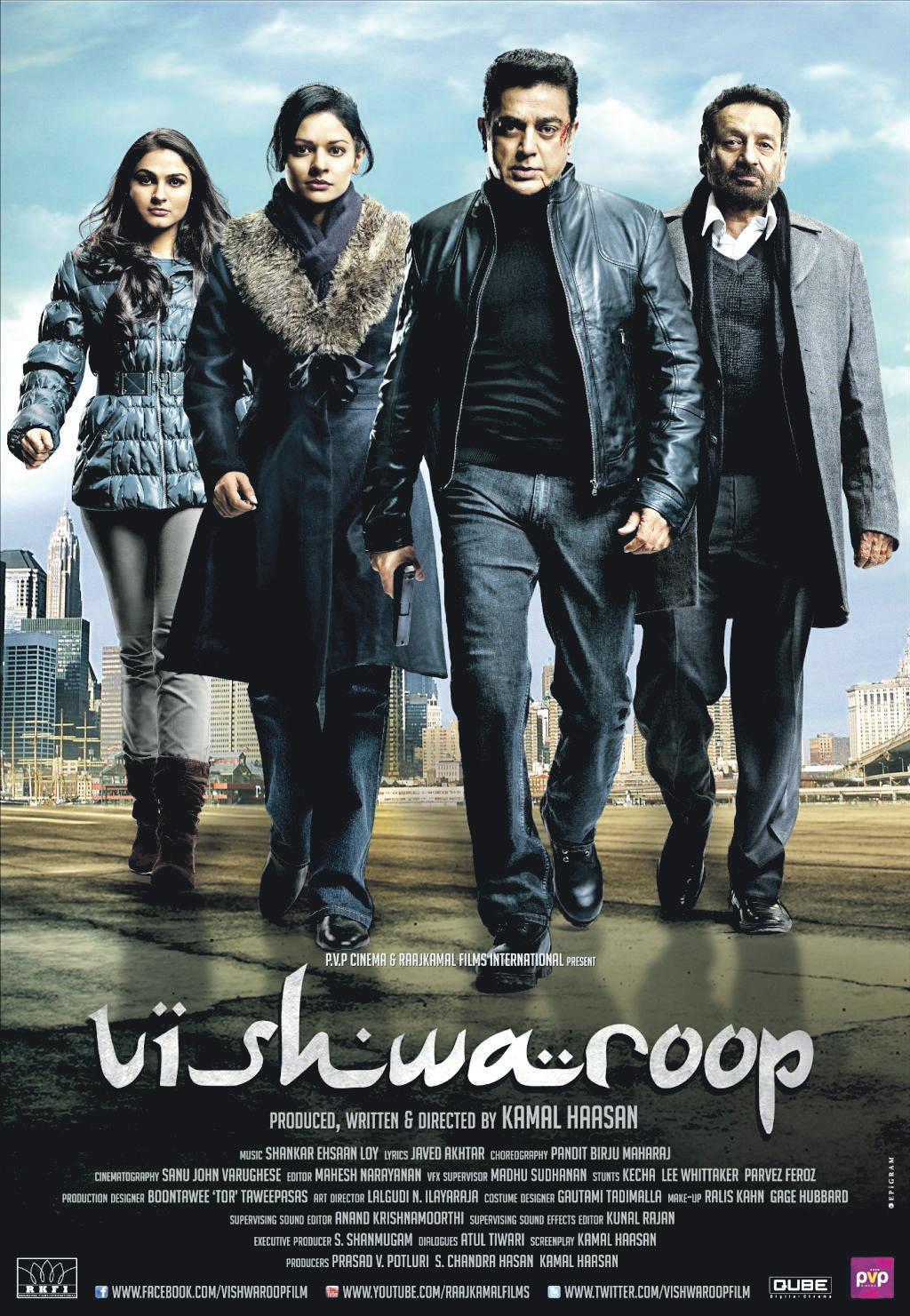
to put aside if you can define heroism from a context far greater than your own good. The deeper thrusts of Kamal Haasan and Atul Tiwari’s devious screenplay leap out of this compact epic drama, which takes off into the Taliban terror outfit in Afghanistan and hence to the New York suburbia where domestic normalcy is replaced by a violence - a kind of ceaselessly renewable violence that has gripped working-class
the grossly underrated Hey Ram in 2000) is in no hurry to tell his tale. Not that he wastes time. The mood for adventure is built quickly, and the payoff is enormously satisfying.
With some remarkably austere and sharp editing by Mahesh Narayan and camerawork by Sanu John Verghese that captures scenes of violence with as much rugged candour as the sharply-drawn
The sharply-drawn characters, the terrifying insight into the psyche of terrorism and the sumptuous mounting and packaging add up to a movie that is quite easily one of the finest adventure sagas in recent times. The action sequences are, at last, on a par with Hollywood.
Insult to any community? Hah! It would be an insult to the filmmaking community to miss Vishwaroop. Miss this big screen adventure your own risk.
S UB h AS h K.Jh A
STARRING: Saif Ali Khan, Deepika Padukone, John Abraham, Jacqueline Fernandez, Anil Kapoor, Ameesha Patel
DIRECTED BY: Abbas-Mustan
HHEveryone is busy deceiving everyone else in this paper caper, which probably looked tempting in the writing but comes across on screen as a masquerade of hedonistic hi-jinx filmed at exotic locales where men and women play for high stakes, live dangerously and die foolishly.
Abbas-Mustan’s love for depicting the high life is by now well-known. Everyone in an Abbas-Mustan caper takes his or her life at the race course seriously when in fact the characters are all an extended joke. They are comicbook cut-outs pasted on to the big wide screen with all their exaggerations blown out of proportion. It’s hard to pinpoint where the leakage
in this latest Abbas-Mustan adventurecaper begins to seep septically into the plot. But you know there is something serious amiss in the plot when one protagonist, Saif Ali Khan deadpans: “Revenge is best served cold.”
Really? If that were indeed the case then the volumes of vendetta served up by disgruntled men and women in Race 2 should have made our adrenaline...er... race really hard.
Alas, the proceedings are as exciting as graffiti on a newly-painted toilet wall. The uni-expression macho man John Abraham loves the leggy Deepika Padukone who loves the scowling Saif Ali Khan who loves Jacqueline Fernandes. In the end, these self-serving hedonists seem to love none but themselves.
Boring in their self-absorption and utterly oblivious to the world around them where pain and suffering are to be obtained once the fun and games end, these characters are busy striking
artificial poses in carefully-toned bodies draped in the best dresses and suits created for the rich and the restless.
These are the nowhere people searching for thrills in a plot that revels in restlessness and seeks succour in making suckers out of all the characters. The only mildly interesting characters are the brassy detective played by Anil Kapoor and his air-head secretary Ameesha Patel: she flutters her eyelashes at his incessant phallic jokes feigning complete ignorance.
Sadly, the holiday mood that prevails through the film grips the film’s architects. They seem to be on leave as the action director takes over the proceedings. To be fair a couple of chase sequences specially one through the crowded streets of Istanbul where Saif hunts down his beloved’s killer, are killers. But the climax on board a fake luxury aircraft is a howl. Amateur adventurers getting a kick out of their big-boy antics, John and Saif are to be taken as seriously as Superman and
STARRING: Rajat Kapoor, Shabana Azmi, Anupam Kher, Ronit Roy, Satya Bhabha, Seema Biswas, Shahana Goswami, Siddharth, Anita Majumdar, Kulbhushan Kharbanda, Darsheel Safary, Soha Ali Khan and Shriya Saran
DIRECTED BY: Deepa Mehta
Deepa Mehta’s Midnight’s Children is not a well-crafted film of Salman Rushdie’s Booker Prize-winning novel of the same name. Yet it captures the essence of the novel to the core.
Told through the lives of the children born at the stroke of midnight of Aug 15, 1947, especially Salim, Shiva and Parvati, it is a multi-layered tale of destinies. It is a story of the rich, the poor and the misguided. It is fiction and fantasy delightfully wrapped within the folds of the political scenario of the three countries, India, Pakistan and Bangladesh.
What precedes the birth of Salim is a complex tale that is narrated in the first 45 minutes of the film. Inspired by her rebel husband’s communist slogan, “Let the rich be poor and the poor, rich”, the misguided peadiatric nurse, Mary, deliberately switches the identity tags of the two babies as a
gesture of solidarity and thereby swaps their destinies.
Moving ahead, in childhood, Salim discovers that thanks to a sneeze and the sniffles, he can hear and see all of the other 581 surviving children around the country born at the same historic day and time as he. Dubbing them as Midnight’s Children, he has the power to call “conferences” in his bedroom late at night, bringing their presence together from all parts to plan the fate of the nation, including the hot-headed Shiva and pretty and mystical Parvati, the spellweaving witch.
The three are intertwined again as adults in the film’s last act when Shiva, now a ruthless military commander, and Salim, following six years of amnesia, become involved with the beautiful adult witch, Parvati against the background of Indira Gandhi’s brutal emergency measures.
Rushdie’s rich characters are brought to life by a strong ensemble of esteemed actors whose performances were well extracted by director Deepa Mehta.
Debutant Satya Bhabha delivers a confident performance as the grown up Salim and Siddharth is the perfect foil for him as the embittered Shiva. Darsheel Safary as the young Salim is undoubtedly brilliant.
The competent Seema Biswas is charming as the misguided, guilt-ridden
nurse and the catalyst for the unfolding sequence of events. Shahana Goswami smoothly conveys the poignant turmoil of the mother inadvertently caught in the cross-fire, while Ronit Roy is exacting as the frustrated businessman. Anita Majumdar also makes an impression as the hard-hearted, ambitious Emerald, alongside Rahul Bose as her military powerbroker husband, Zulfikar.

Rajat Kapoor as Dr.Aziz, Salim’s putative grandfather is amusing. Shabana Azmi as Rajat Kapoor’s wife, Sriya Sharan as Parvati, Soha Ali Khan as Salim’s sister and Kulbhushan Kharbanda as Picture Singh are wasted.
Visually, the film encompasses scenes of war, liberation, celebration, corruption, romance and mourning - all beautifully captured by cinematographer Giles Nuttgens. The visuals are brilliantly layered with Nitin Sawhney’s ethereal score, making it a perfect backdrop with the mystical quality of the magic realism scenes; it is like watching a stunning canvas gradually come to life.
Batman cut-outs in a multiplex displaying forthcoming attractions.
The girls Deepika and Jacqueline try hard to pump up the steam by raising the mean quotient in their characters. They hardly look provocative enough to be convincing as femme fatales. Saif plays a somewhat smirkier avatar of Agent Vinod. John alternates the scowl with the smirk sometimes interchanging the two expressions without warning. Can’t blame him, poor chap. He must be as confused about the plot as we are.
Does anyone associated with this poshlooking but vacuous caper have any clue as to what they are doing? Drowned in a cacophony of one off-key song after another, wallowing in their one-note wickedness and getting high on their endless bouts of drinking, partying and masquerading, the characters in Race 2 are a laugh. But shhhh. Don’t tell them. SUBhASh K.JhA
Even with Salman Rushdie’s narration and screenplay, what probably did not work for Midnight’s Children are the abrupt scenes. Each scene is brilliant, but in silos, disconnected with the next, making it difficult to capture and bring to life the essence of the book that combines a type of unexplained practicality.

Yet this is a striking, well-produced and thoughtfully designed epic.
Even with all its flaws, Midnight’s Children is worth a watch. If nothing else, go and watch Midnight’s Children to satiate your curiosity about this much-talked about novel.
T ROY R IBEIROIt was anticipated to be a winner, and looks like Race 2 it to the finishing line of the Rs 100 crore club. At the time of going to press, the Abbas-Mustan action thriller had raked in Rs 79.6 crore, in its first week in the domestic market. In the international market too, the movie is doing surprisingly well, grossing over $4.25 million in its opening week. Made at Rs 60 crore, the film features an ensemble cast of Saif Ali Khan, John Abraham, Deepika Padukone, Jacqueline Fernandez, Anil Kapoor and Ameesha Patel. So will Race 2 be a winner? Let’s wait and see!

Recently released and much anticipated Midnight’s Children is a big-screen adaptation of Salman Rushdie’s Booker Prize winning novel of the same name. Directed by Deepa Mehta, the movie is yet to create an impact on cinema-goers. But for the actors, the experience of working on Midnight’s Children has been unique. And Darsheel Safary, who has portrayed the lead role of junior Saleem Sinai says he feels lucky for being a part of such a big movie.
Talking about his experience while working with Mehta, Darsheel said, “I was almost like an assistant on the sets helping her set up things.”
Actress Kajol, who with husband Ajay Devgn has been actively involved in social work, says getting associated with causes is part of social responsibility and it is their way of giving back to society.

The 38-year-old, along with her actor husband, is supporting Coca Cola-NDTV’s Support My School campaign and has donated Rs.10 lakh.
“I believe it is part of our social responsibility. Especially after having kids, Ajay and I feel the need to give back and in a different way, not in regular cinematic way,” Kajol says. “We feel passionate about causes like save the girl child, education and literacy. We believe, these are the things that will make a difference and
make our country grow”.
An endeavour to get better facilities in schools in rural and semi-urban towns, the Support My School campaign has impacted as many as 100 schools by providing them with improved amenities like access to clean water, proper sanitation, and sports facilities among others.
Last seen in the 2010 film We Are Family, Kajol feels that celebs can make a huge difference to charitable causes.


“Their association brings more focus on the whole issue. It brings a different kind of publicity and also spreads awareness,” she said.
Currently busy with her home and children - daughter Nysa and son Yug - Kajol hopes to get back to work next year.
“I have come a long way from Taare Zameen Par and it was like a stepping stone in my life. I feel so lucky that finally there is some big movie that I have done,” said the 16-year-old at the premiere of Midnight’s Children. Darsheel admits he is

still not very familiar with the film’s script, and that is why he was very “curious” to watch the movie. “Whatever she wanted, I used to help her and she also used to help me. Even in my studies she was very supportive. It was fun working with her and I am looking forward to working with her again,” he added.
Actress Shahana Goswami who plays Amina Sinai, mother to lead character Saleem Sinai, says the filmmaker is quite a taskmaster on the sets, but a great one to work with.
“Deepa is a task master but in the best possible way. I find her to be really good and hardworking with her actors and in every other aspect which she looks into before coming on the sets,” said Shahana. For the actress, it was a learning experience to work with Mehta. “I won’t say she is a taskmaster in making you cry or giving you a bad time. She is very involved in her actors. So for an actor, she is a brilliant director to have,” Shahana explained. “She really pushes you to bring out a deeper emotional connect with the character and that’s really a great thing for an actor’s growth”.
Midnight’s Children also features Rajat Kapoor, Shabana Azmi, Anupam Kher, Ronit Roy, Satya Bhabha, Seema Biswas, Siddharth, Anita Majumdar, Kulbhushan Kharbanda, Soha Ali Khan and Shriya
Film producer Pahlaj Nihalani plans to give actor Govinda’s daughter Narmada Ahuja a “perfect launch” in Bollywood. “One thing is for sure... I am definitely going to launch Narmada. She is like family and I would like to give her a proper launch. I am scripting something special for her and I assure it will be the perfect launch for her,” Nihalani said recently.
Narmada has been waiting on the sidelines for the right break to make her

Beetroot as garnish.
I’d never seen that before. As I sat looking at my plate of tokri chaat at Chandigarh’s most popular eatery Gopal’s, the beetroot took my breath away. Long thin shreds of the vegetable brought the plate alive with colour, especially as its juices spread like tiny rivulets of maroon-and-purple over that final yogurt topping. Its beautifully earthy flavour was a perfect precursor to the explosion of taste that was to follow.
The beetroot garnish has since been adding a touch of glamour to my own salads, a bright reminder of my recent India holiday that already seems eons ago.
Wasn’t so crash hot about beetroot juice, though - a regular hotel breakfast item during my tenday tour of Kerala. Nonetheless, there’s been a fair bit of beetroot ever since I got back.
Beetroot is filled with antioxidants and minerals such as sodium, potassium and magnesium, and Vitamin C. Its bright colour comes from antioxidants called betacyanins which are fantastic for cardiovascular health, protecting blood vessels and preventing blood pressure, heart disease and stroke.

Golden beetroots, available from select grocers, are sweeter: they do not bleed or stain, as their colour is not dominating. Roasting brings out a sweet caramelized flavour. Beetroot leaves are edible as well. Beetroot lends itself to a variety of easy preparations such as soups and salads, as well as raitas, chutneys and halwas. This last one will probably nullify any benefits of the beetroot towards cardiovascular health, but you could try beetroot chocolate cake
if you have a sweet tooth; it is definitely a healthier type of chocolate cake!
Roast Beetroot
6-8 medium beetroot
2 tsp fresh thyme
2 tsp balsamic vinegar
2 tbsp olive oil
2 tbsp honey
Salt and pepper to taste
Heat oven to 200 degrees. Scrub beetroot and trim. Cut into wedges and arrange on a lined oven tray. Mix together vinegar, olive oil, thyme and honey and pour over the beetroot. Sprinkle salt and pepper over and toss together well - use hands to ensure the beetroot is thoroughly coated. Roast for 25 minutes until the beetroot wedges are cooked through.
Roast Beetroot Salad
6-8 medium beetroot
200g walnuts
2 tsp honey
150g Danish feta
¾ cup pomegranate seeds
3 tsp light olive oil
3 tbsp balsamic vinegar
1 ½ tbsp brown sugar
Salt and pepper
Rocket leaves
Preheat oven to 200 degrees. Scrub beetroot and trim. Wrap in foil and cook in oven for about an hour or until tender when tested with skewer. Remove from oven and unfurl carefully. Stand for 10 minutes and then peel - wear disposable gloves to save hands from staining. Cut into large neat portions.
Put walnuts into small frying pan and add honey. Cook, stirring, till nuts are well-coated and heated through. Cool. Make dressing by combining olive oil, balsamic vinegar, brown sugar, salt and pepper.
To put salad together, throw in rocket leaves in deep bowl and add beetroot, pomegranate, honeyed walnuts and Danish feta (cubed or crumbled). Drizzle dressing over and toss.
Beetroot Raita
1 tbsp olive oil
1 tsp mustard seeds
1 dry red chilli
1 tsp sesame seeds
1 sprig curry leaves
Pinch asafoetida
1 cup (200g) thick Greek-style yoghurt
2 small beetroots, cooked, peeled chopped into 5mm cubes
Heat oil in a small frying pan. Add the mustard seeds and dry red chilli. Cook till chilli is blackened: this gets rid of its heat and increases its flavour. Throw in sesame seeds, curry leaves and asafoetida, and cook till sizzling. Meanwhile, combine the yoghurt and beetroot in a bowl and season with salt and pepper. Pour tempering over straight from
the frying pan and mix, and watch the yoghurt turn into a beautiful pink.
1 large beetroot, grated
¾ tsp tamarind concentrate
3 numbers eschallots (scallions)
4 tbsp fresh grated coconut
1 tbsp chopped garlic
1-2 dry red chillies
1 tsp chana dal
1 tsp coriander seeds
1 tsp urad dal
Salt to taste
3 cloves
½ inch cinnamon stick
¼ tsp fenugreek seeds
For tempering:
1 tbsp oil
1 tsp mustard seeds
Pinch asafoetida
1 sprig curry leaves
Heat oil in a pan and add garlic, fenugreek seeds, dals, cloves, cinnamon and red chillies and cook until sizzling. Add grated beetroot, coconut and tamarind. Stir to combine. Cook till the raw
smell disappears. Cool. Process in a blender with a little water, to make a smooth paste. Add salt to taste and mix well. To temper, heat oil in a small frying pan and add mustard seeds, asafoetida and curry leaves. When it comes to a sizzle, pour over beetroot chutney.
1 kg beetroot
1/3 cup orange juice (preferably freshly squeezed)
3 tsp dry roasted and ground cumin seeds
2 tsp dry roasted and ground coriander seeds
Salt and pepper to taste
1 cup yoghurt
Roast the beetroot as explained under Roast Beetroot Salad. Cool and chop flesh up.
Process together with orange juice, cumin powder and coriander powder.
Add yoghurt, salt and pepper and mix well. Refrigerate until needed.
Seeking groomS
Seeking suitable match, a non smoker, ideally aged between 50 and 60. For fair, young looking Hindu lady, 5’ 2”, 54, divorced, veg, Australian citizen. Caste no bar. Please contact 0449 623 316 or email alpine_rhapsody@hotmail.com
Suitable well-settled / professional match for Punjabi Arora, beautiful, never married, 39 / 166, qualified IT professional. GSOH with good family values. Brought up in India. Working in MNC Sydney. Australian citizen. Early marriage. Serious enquiries only. Email details with photo: ausgirl101@gmail.com
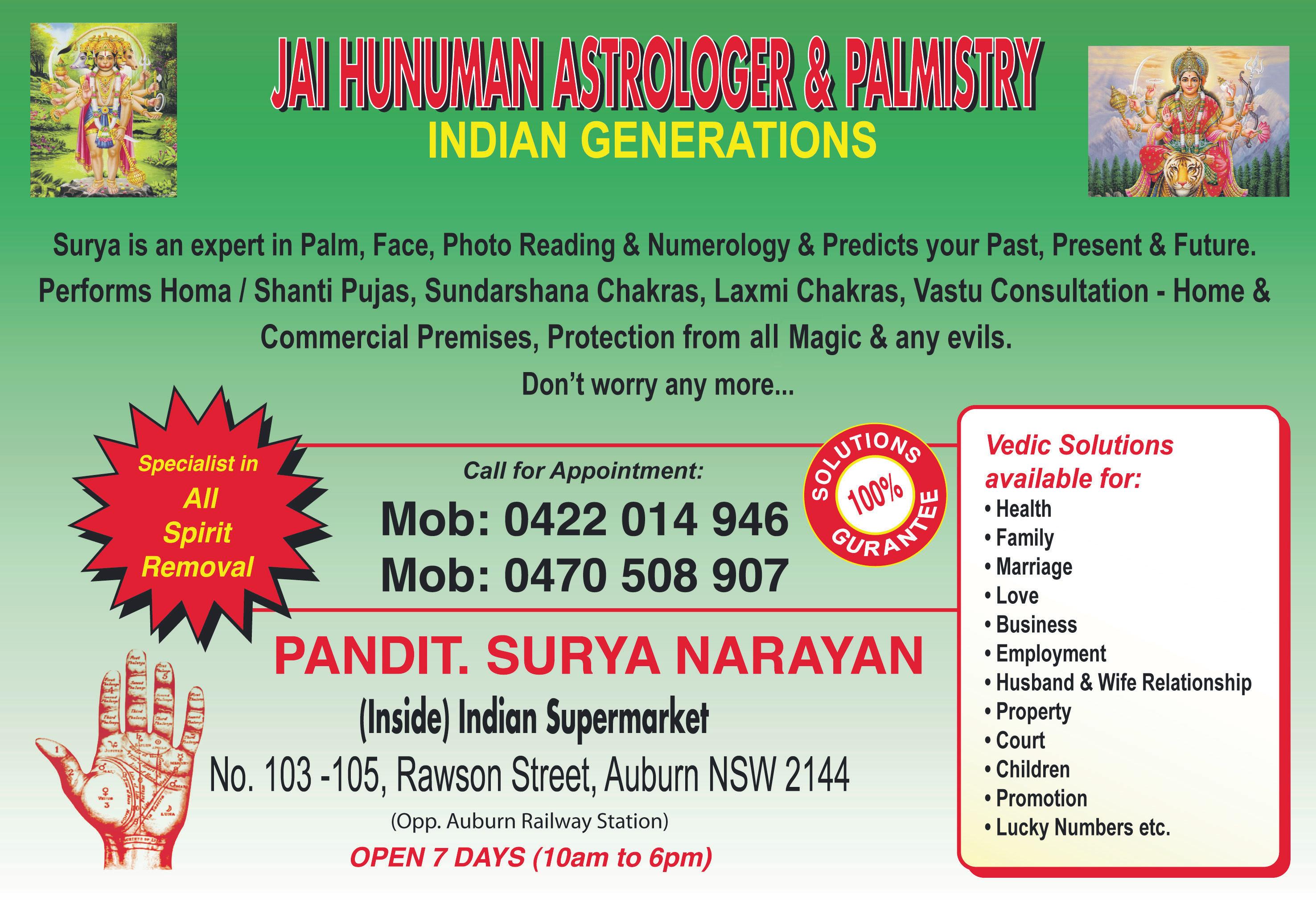
Seeking match for tall, good looking, slim, fair, educated, working Hindu Khatri girl, 25, brought up in Sydney. Well educated and settled family. Boy with similar background preferred. Email: 1169ab@gmail.com
Seeking genuine, compatible, well educated, employed / business match from respectable family, broad minded /mature outlook, independent, Indian background, age 50+ for caring, honest, Indian Christian divorcee, Australian citizen, well settled in Perth, 50 years, 5’3” tall, younger looking, attractive graduate nurse, employed. Caste no bar. Please send profile with photo to email emily.lotus@hotmail.com

Seeking suitable match (from Australia, never married) for Hindu girl, 35 years, Chartered Accountant, non-veg, living in Australia over 25 years, with eastern and western family values. Please email with all details on ganesh2011v@gmail.com
Well settled / professional alliance invited from Australia / India for 41/165, unmarried, charming Punjabi Khatri girl, family oriented and responsible, IT professional, working in Sydney. Australian citizen. Early marriage. Can relocate. Serious proposals only. Email profile with recent photo: sydgirl09@ gmail.com
Respectable Sikh Family of New Delhi seeks alliance for their smart good looking sweet natured family oriented daughter 24/165cms, B.Com Graduate, Primary Teacher, looking for a well educated boy from a cultured family well settled in Business/ Industry/Profession. Girl and Parents in Sydney from end December until mid January.
Call 0431 337 881
37 yrs old Brahmin never married graduate girl currently visiting Australia. Looking for Australian citizen preferably unmarried. Whole family settled here. Belongs to status business family. Applied for permanent residency earlier. Contact with photo and details urgently at npkhanna@ymail.com
Seeking BriDeS
Seeking suitable match for 37 years, good looking Gujarati Brahmin boy, 5’7” Australian citizen caste no bar. Born and brought up in Mumbai, India and moved to Sydney 5 years ago. Please email with details on ravi_p100@hotmail.com
Match required for a 48-yo, slim, clean shaven, Jat Sikh Aust PR living in Melb, working for a Bank, own house. I have no children but I don’t mind if she has children. Genuine enquiries only email: jat_sikh@ hotmail.com
Single tall man, often travels with work, desires to meet attractive good character single or widow lady over 40 with a view to marriage. Apply PP GPO Box 2336 Adelaide, South Australia 5000.
Seeking suitable match for a boy, 6’ tall, 31 yrs, never married, Australian Citizen, Athletic, Punjabi Khatri, reputed corporate professional. Please email your particulars with recent photo( Compulsory) on win.rocky@gmail.com or call 0430 179 273.
Compatible match for 1975 born, handsome clean-shaven Sikh Khatri boy, 5’ 9”, two Post-Graduate degrees from India and recently finished Master in I.T from Australia . Currently on temporary resident visa and working full-time in Customer Service role. Looking for welleducated, Permanent resident / Citizen girl from Sikh family background. Early marriage.
Phone: 0422 102 242 or Email: ghai07@yahoo.com

